Dreams of La Alhambra
Note: The title is from Enrique Morente’s DVD in which Israel Galván, Tomatito, Blanca Li, Khaled, Juan Habichuela, among others, all strolled through the Alhambra with “el maestro” to music by Morente and his daughter Estrella.
The star in the background is “the place of light and shade” La Alhambra.
A warning to “purists”:
I have visited La Alhambra many times over the past 20 years as a tourist, artist, photographer, photo tour guide, wedding photographer, concert goer and just as a lover of the palace.
This set of photographs is a personal “interpretation” based on my very first visit and memories, which were a huge pool of golden light bathing the entire place.
Gloves off, exaggerated colour, soft focus, pseudo HDR, in fact, many things that will possibly infuriate some viewers and, let’s be honest, also myself, well, a bit.
The photographs are also untitled so you can have your own voyage of discovery.
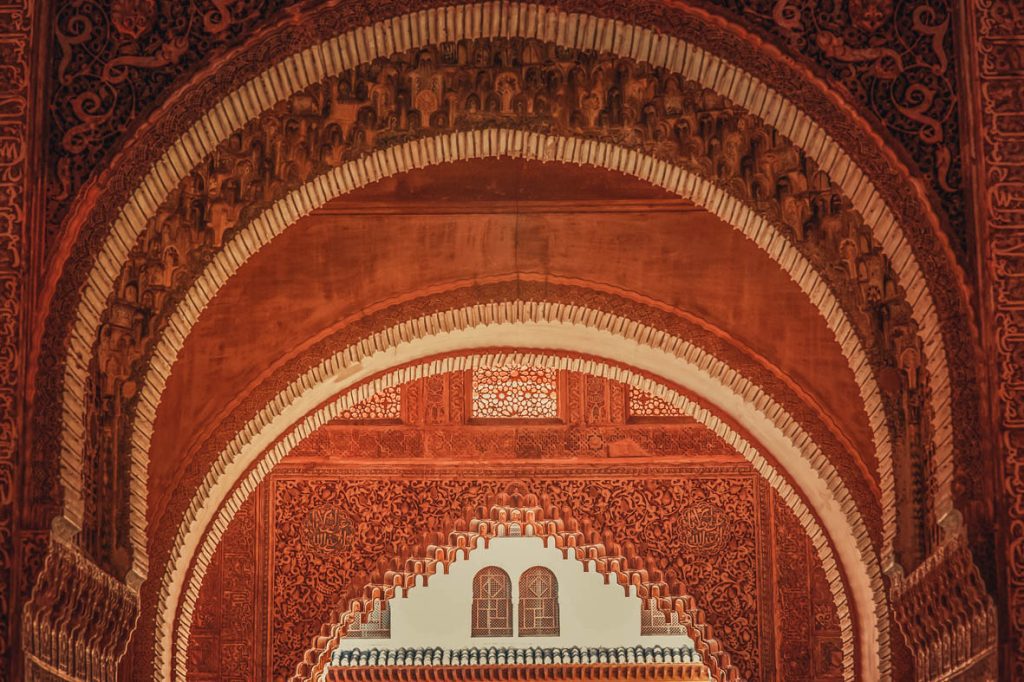
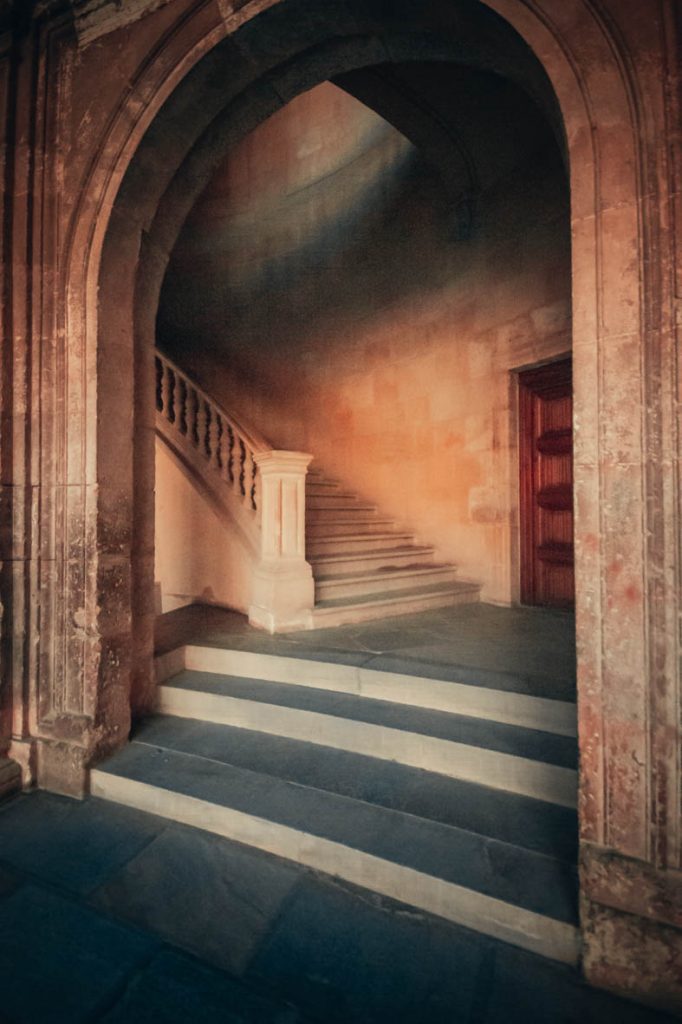
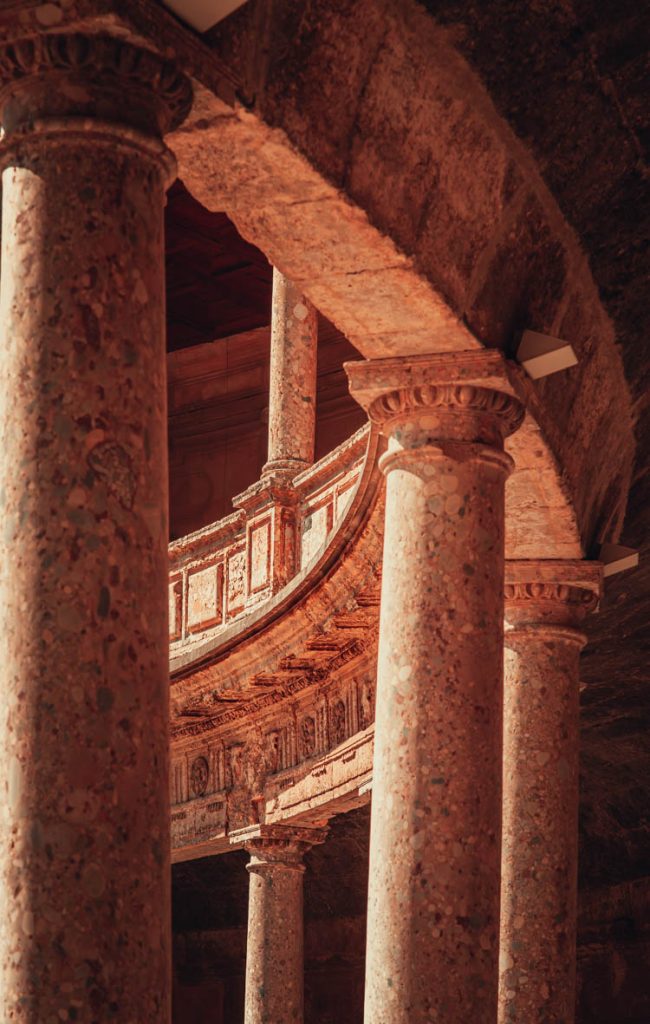
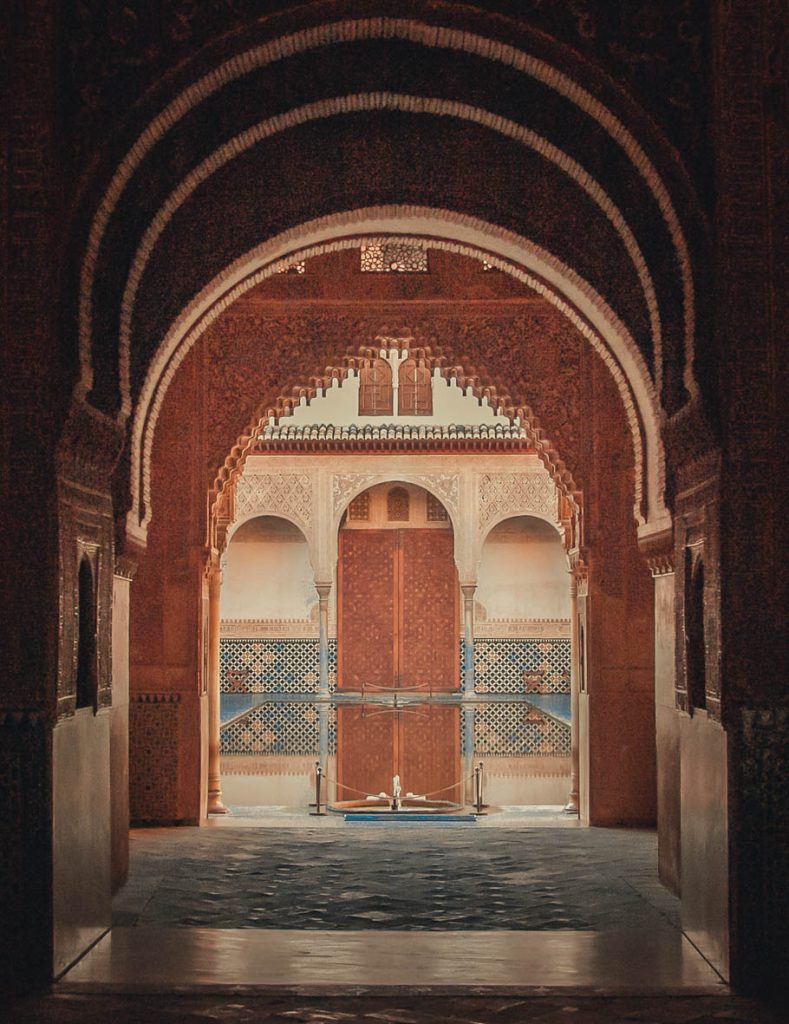
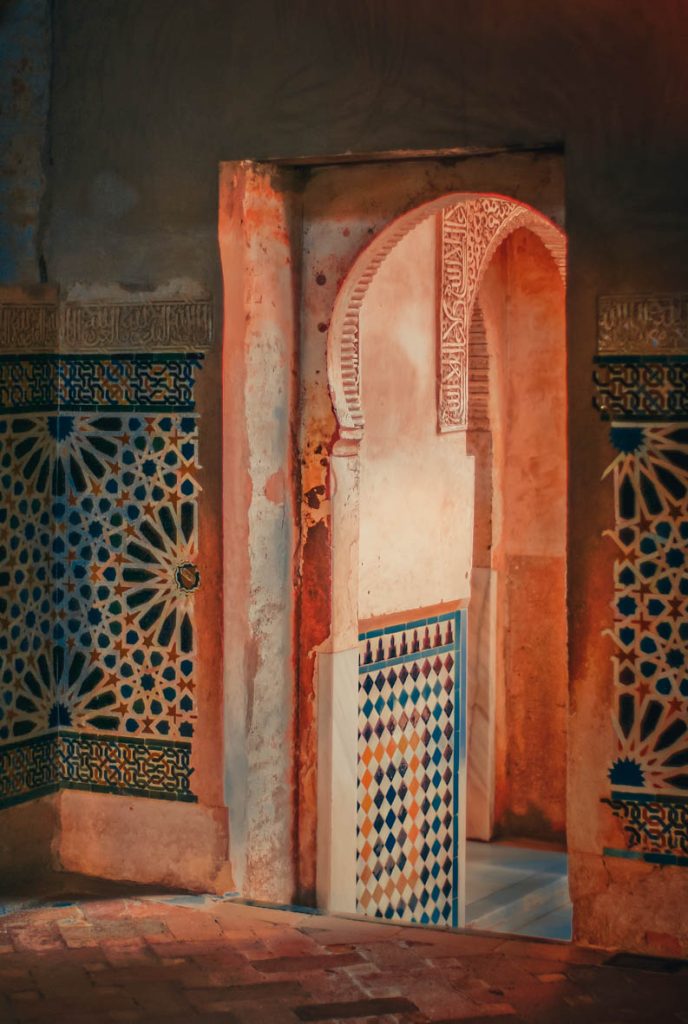
Greater intellectuals than I have written:
“The Alhambra is at the very summit of perfection of Moorish art, as is the Parthenon of Greek art. We can find no work so fitted to illustrate a Grammar of Ornament as that in which every ornament contains a grammar within itself.”
Owen Jones, The Grammar of Ornament, 1856
Something of the Alhambra’s magic seems tied up in the fabled names it’s accreted to itself. “Alhambra” itself means “red” from the red clay foundations of the original buildings. I was entranced by the names of its celebrated halls, like the Court of the Lions and the Fabulous Fountain. Here an oblong, fantastically filigreed courtyard has at its heart an alabaster basin supported by 12 lions in white marble, each of which spurted water at its appointed hour during the day. Around the base of the fountain appears both a poem by Ibn Zamrak and a detailed explanation of the advanced hydraulic system powering the fountains.
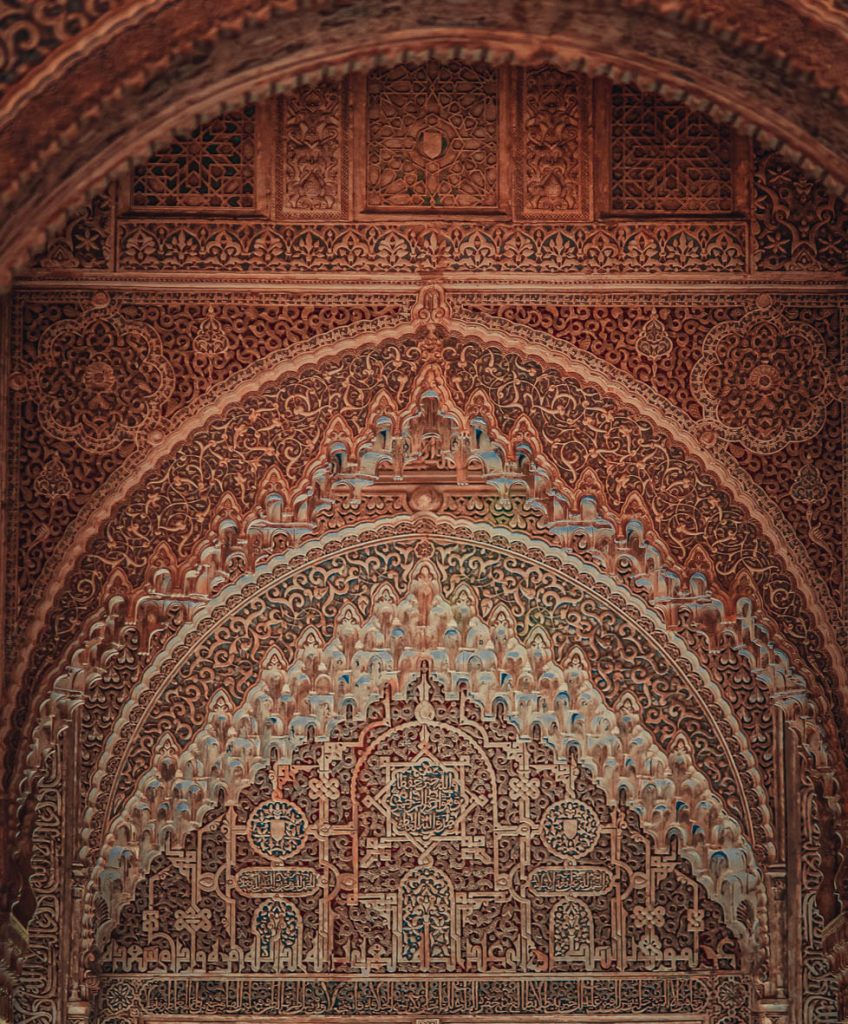
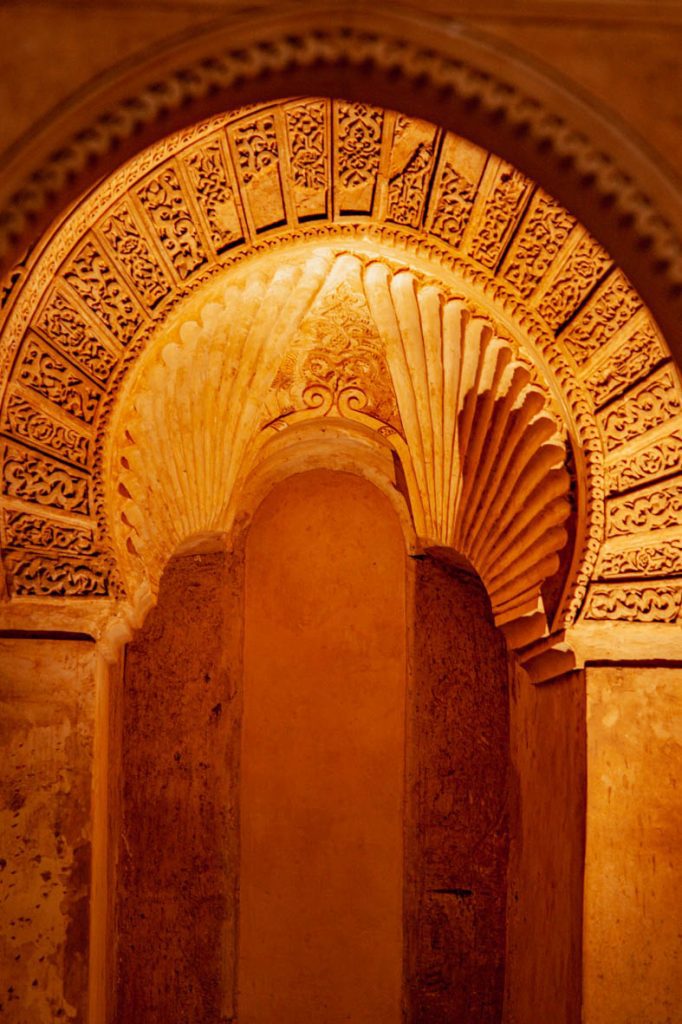
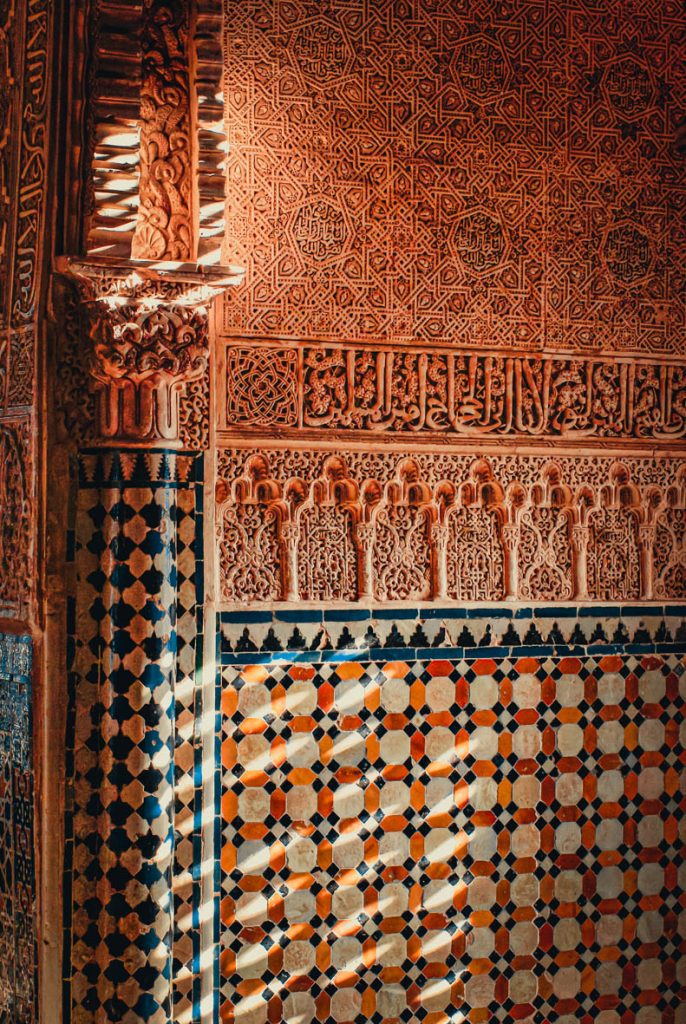
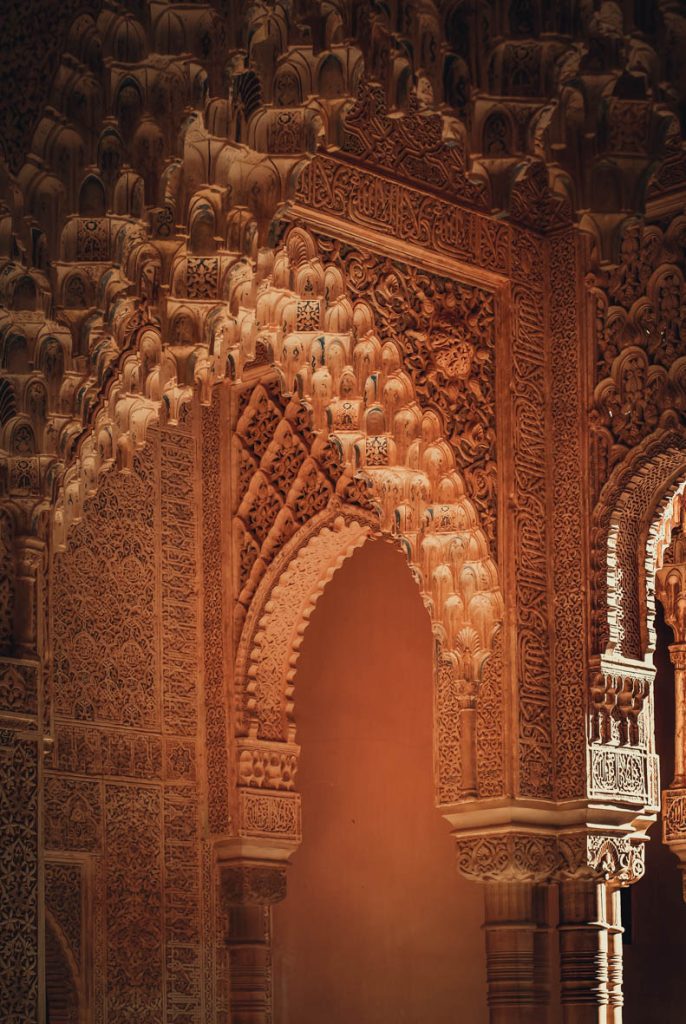
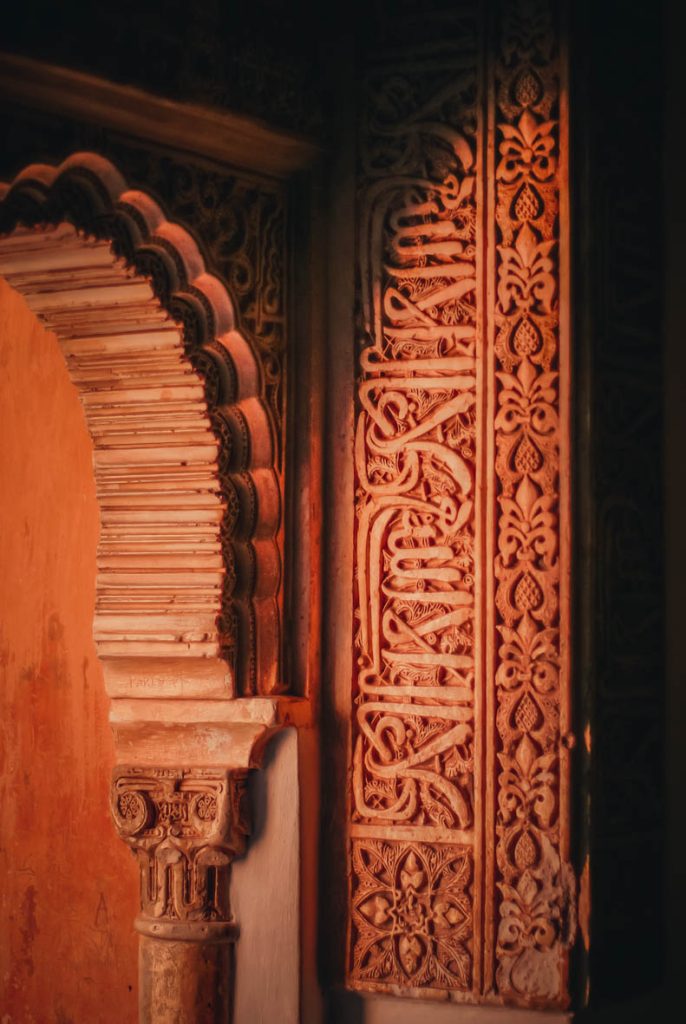
Even mathematicians are besotted by the Alhambra. Math-minded illustrator M.C.
Escher visited the palace in 1922, a turning point in his career. In the book Islamic Patterns and M.C. Escher’s Tessellations, the author explains Moorish philosophy on pattern, how pattern and mathematics reflect the turning sides of a single aesthetic coin: “Muslim intellectuals recognised in geometry the unifying intermediary between the material and the spiritual world. These patterns may be seen as symbolising the Islamic principles of “Tawhid” (the unity of all things) and ‘”Mizan” (order and balance) which are the laws of creation in Islam.”
Escher visited twice, concluding that repetitive patterns gave a whiff of a higher source of knowledge predating mankind. He was fascinated by the “laws of the phenomena” he saw in the Alhambra’s every surface—the order, reflections, repetitions and transformations, each so simple, but combined to approximate every possible form of pattern variation plane geometry can produce.
by Jude Stewart
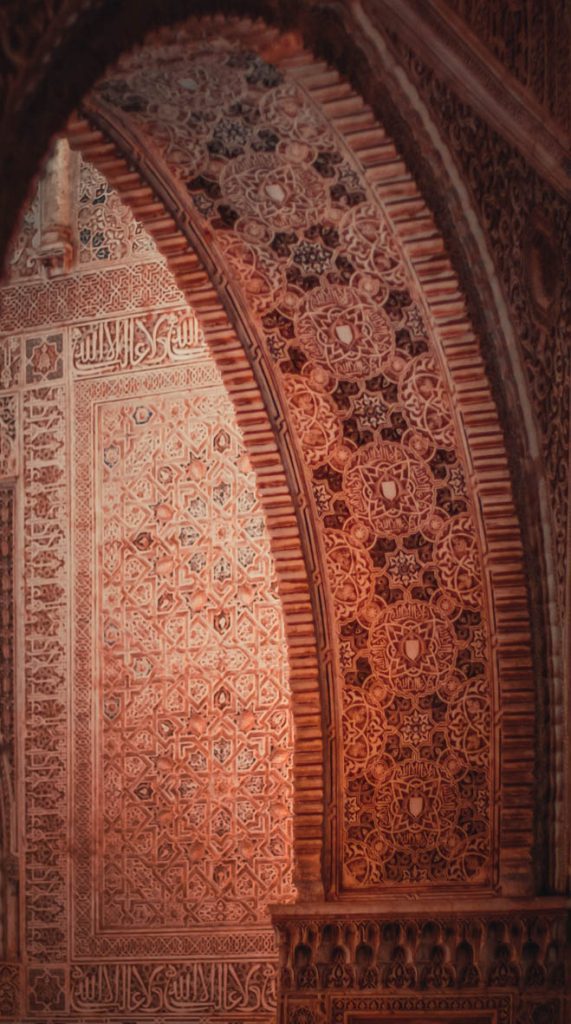

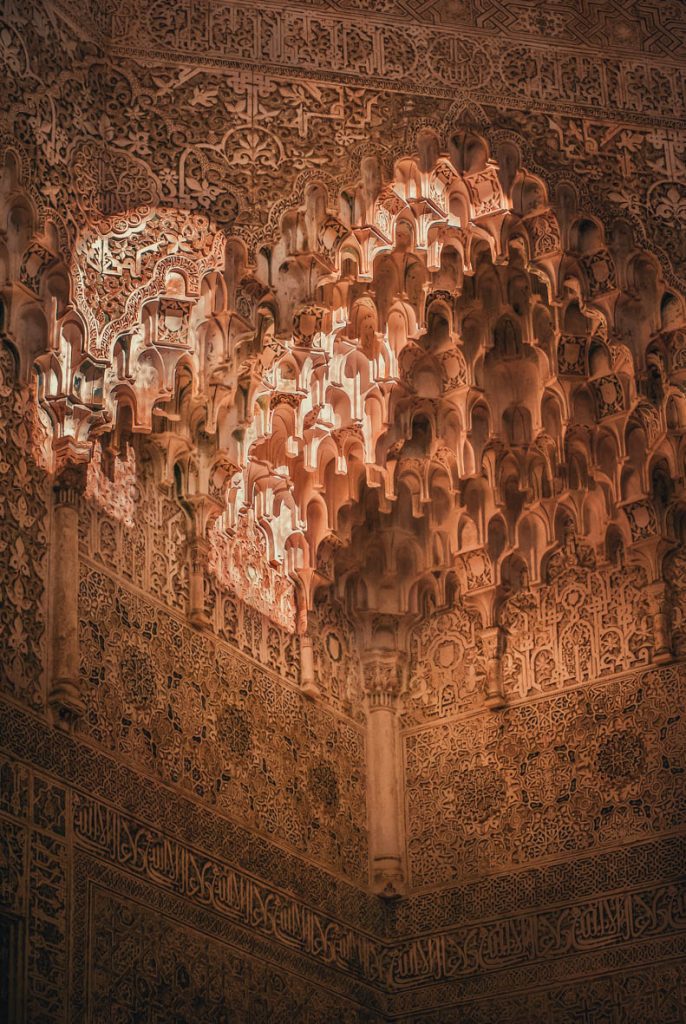
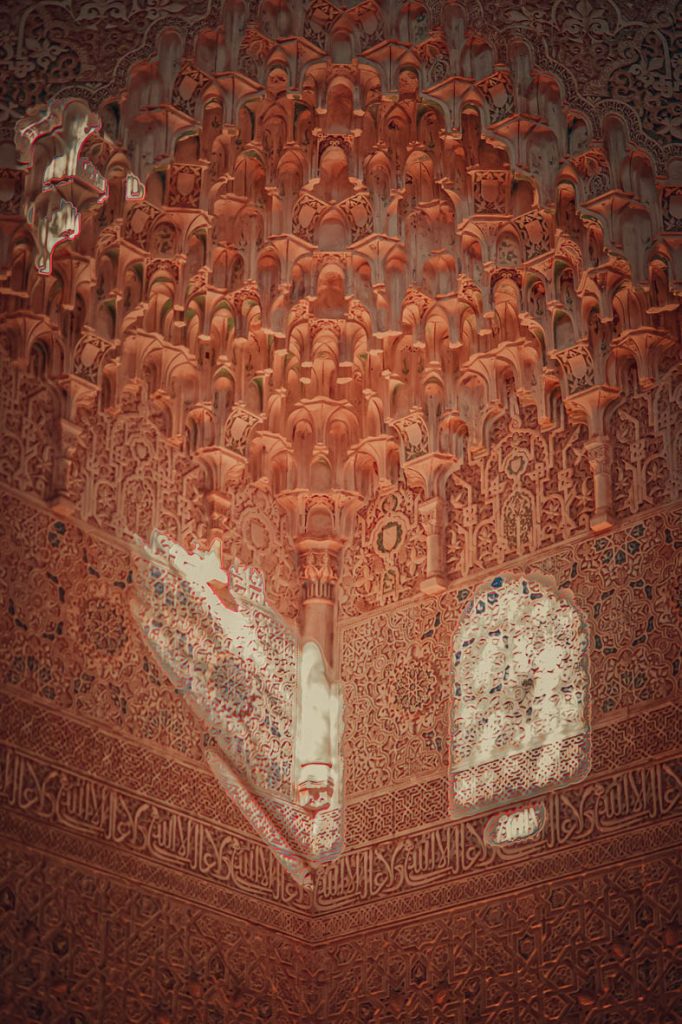
“Tales of the Alhambra”
A collection of essays, verbal sketches and stories by American author Washington Irving inspired by and partly written during his 1828 visit to the palace/fortress complex known as the Alhambra in Granada, Andalusia, Spain. Wikipedia
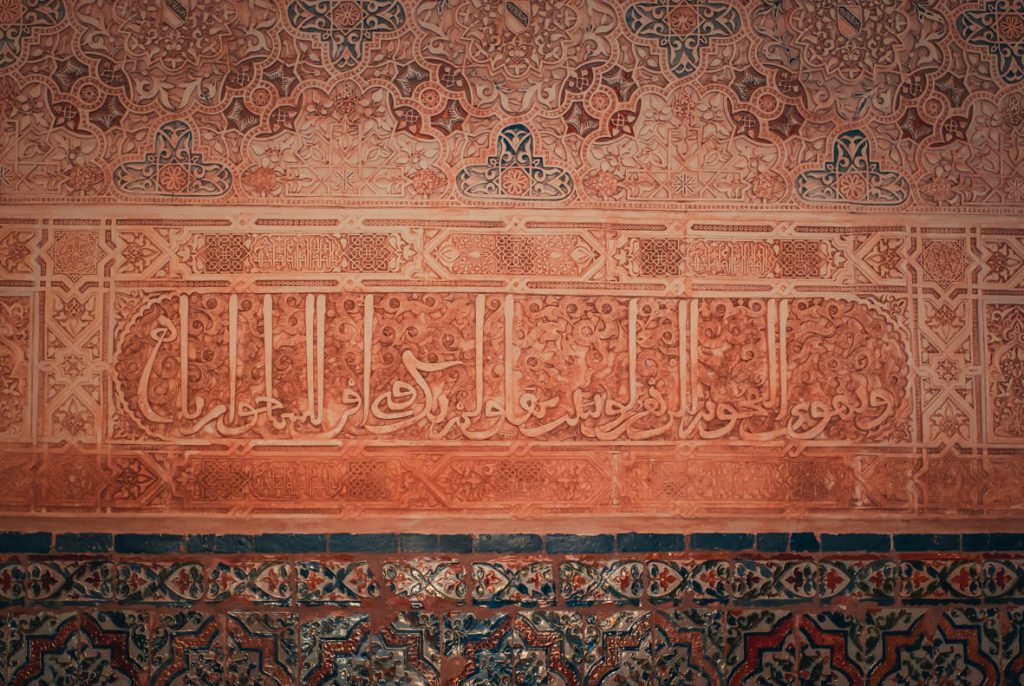
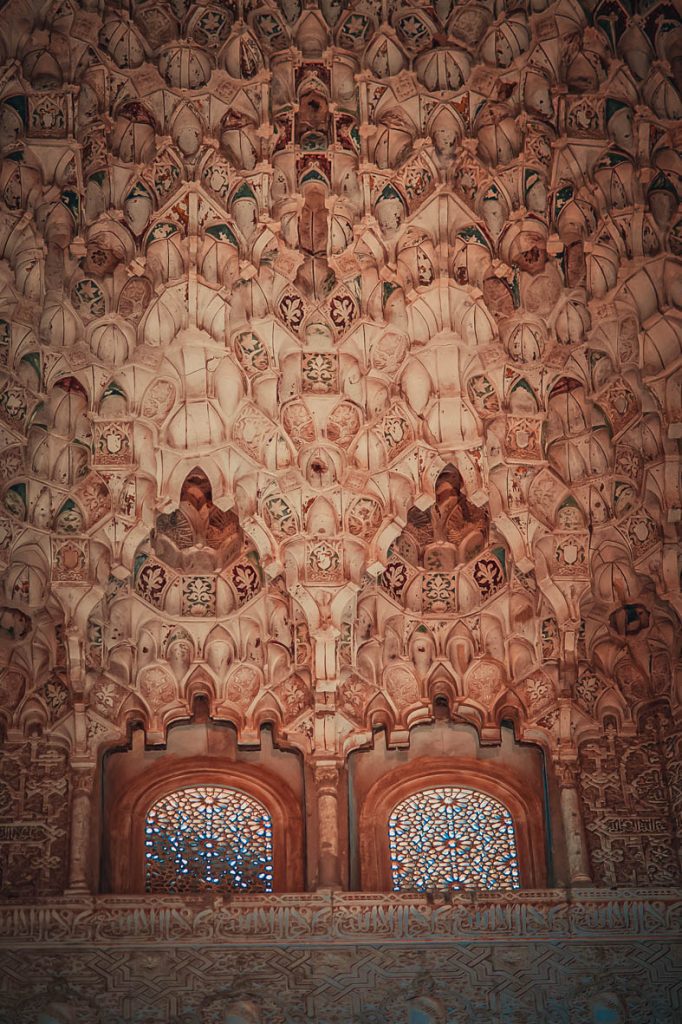
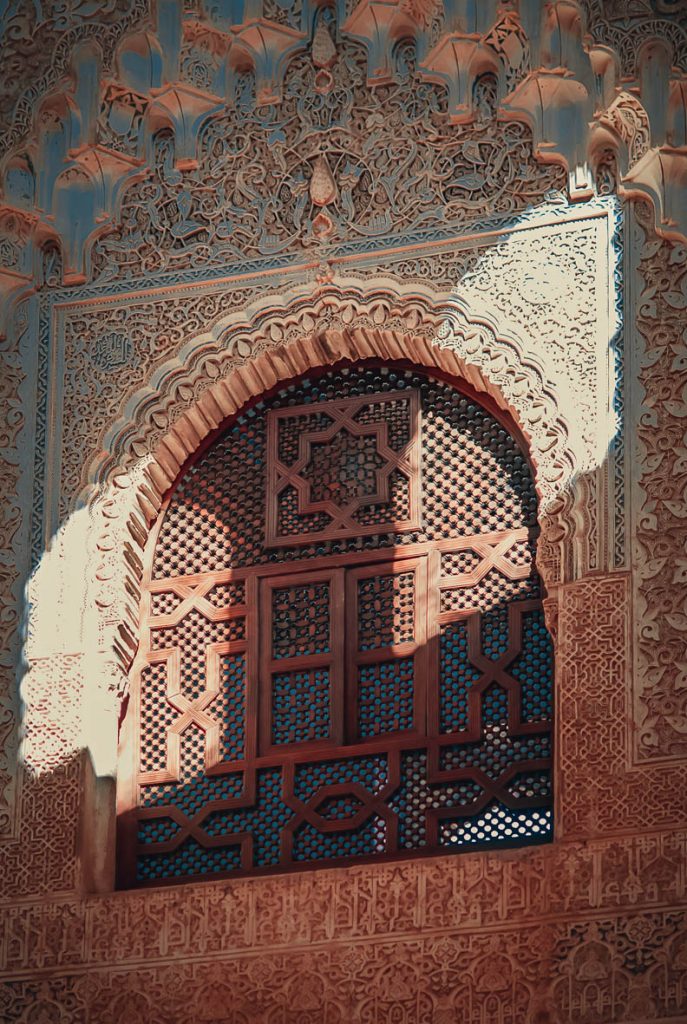
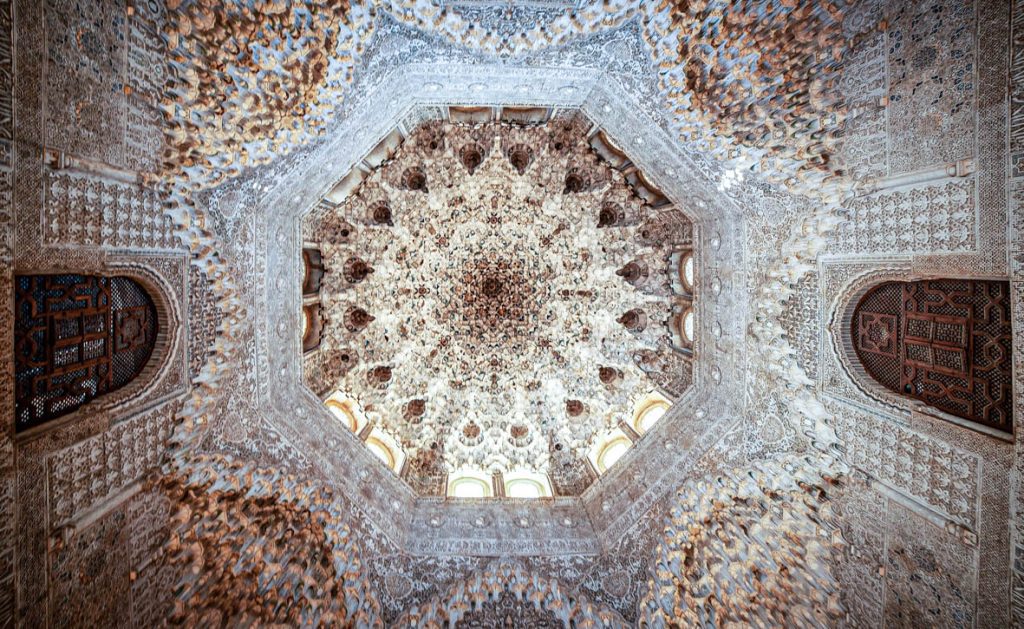
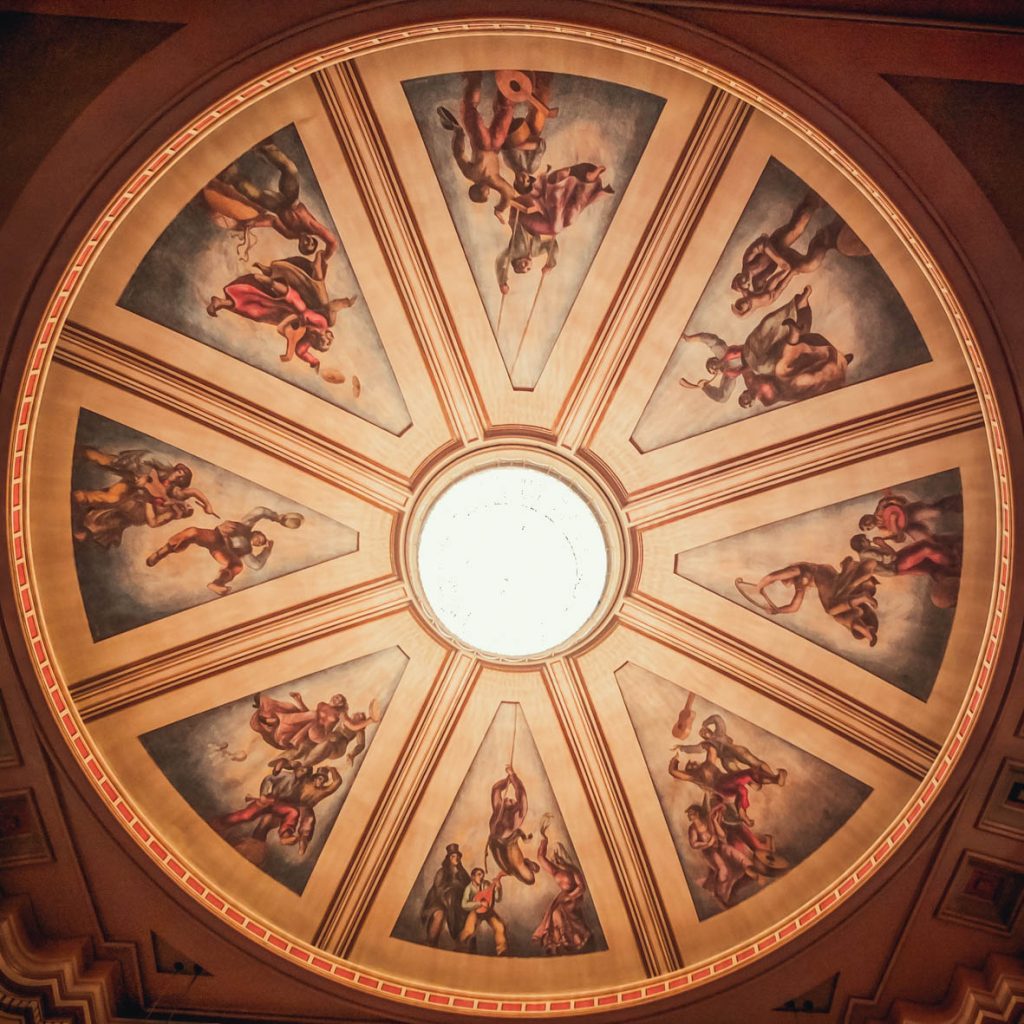
The photographs
When I first visited Spain on a 4-day travel shoot, I only had 1 day to see Granada and La Alhambra, and the first image I took of the palace was from the most photogenic vantage point in Albaycin in front of the Iglesia St. Nicholas.
I stood where millions of people have stood, looking, drawing, photographing and taking in the panorama which the viewpoint presents to us.
This image was made on a Hasselblad XPan using Fuji Sensia. I have revisited the slide many times over the years, processing it in different ways, but my favourite is still a black-and-white version even though you cannot see the glowing reds and pinks of the sandstone.
The second image, which looks similar, was taken from further along the hilltop at a church tower from a different perspective.
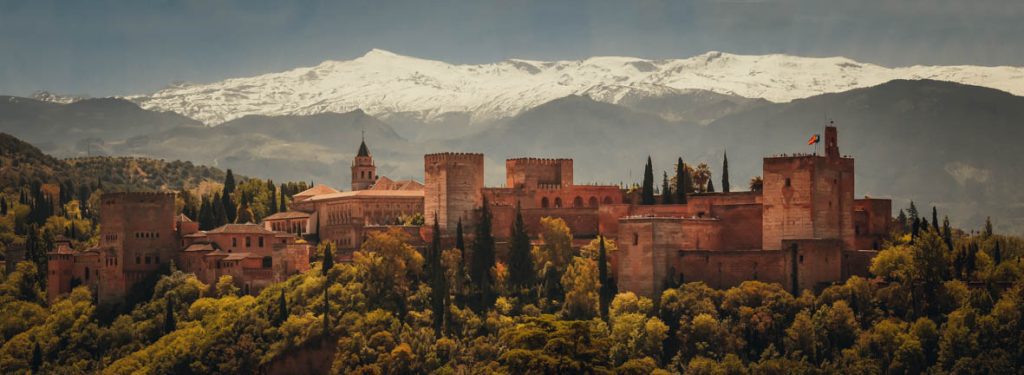
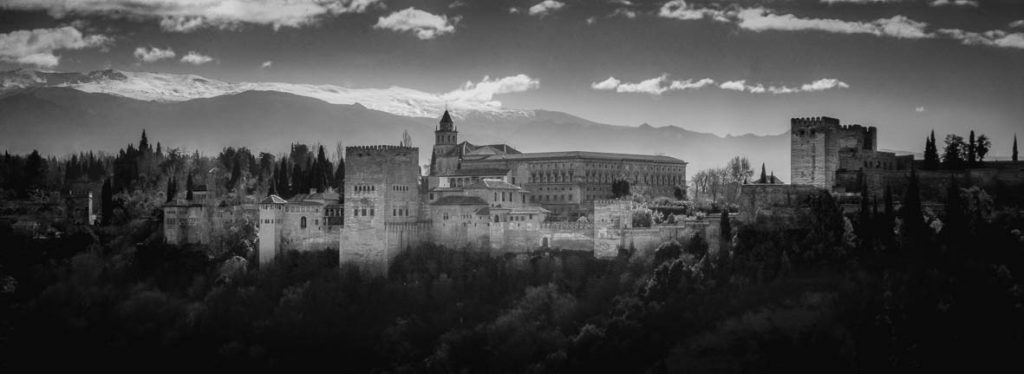
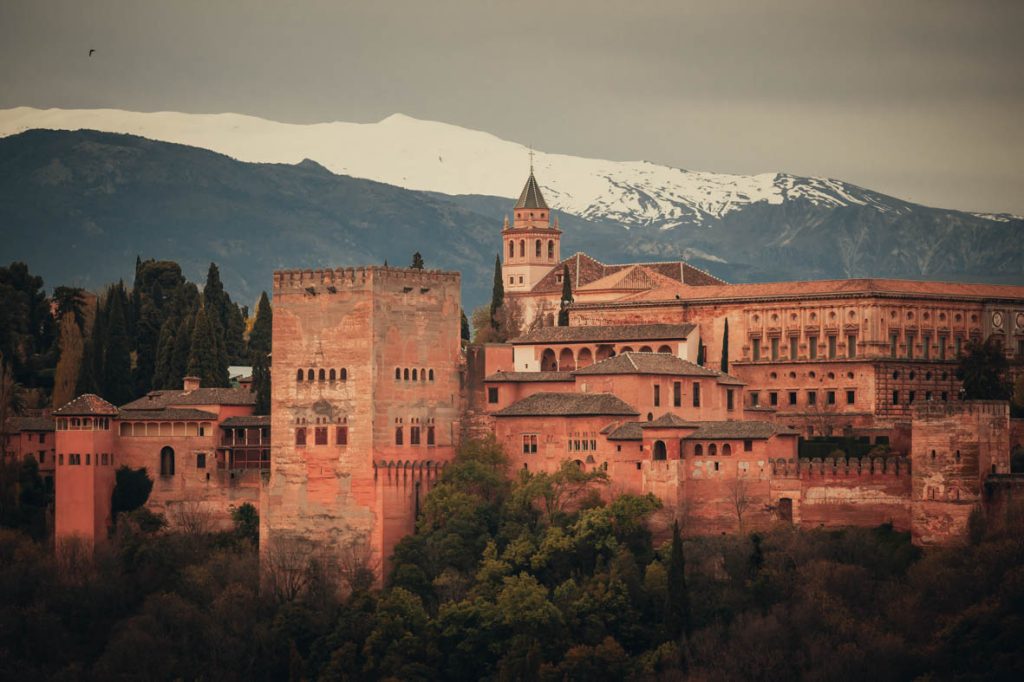
Over the years I have taken many photography students to the viewpoint at dawn when the light can be its most magical and also in the late evening with the setting sun rays enhance the colours of the walls.
I have photographed it on film, early low-resolution digital cameras, full-frame cameras and for the last eleven plus years, on Fujifilm digital.
Does it ever bore me? NO. The light constantly changes throughout the day, and the buildings and interior embellishments are designed to play with the light.
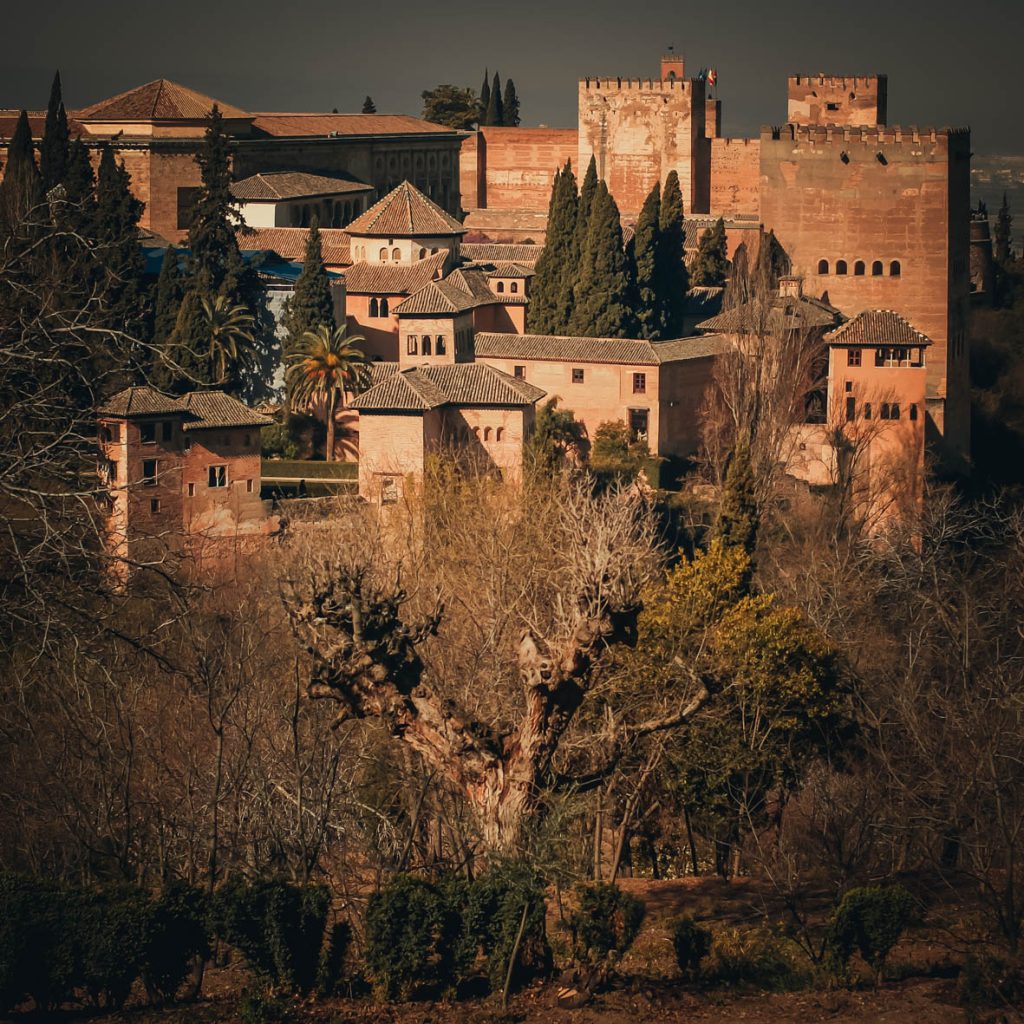

I could have included literally thousands of images from abstract to eternal tourist snaps, but I wanted to show a selection which matched my first memories, which might also entice you to visit the palace and put YOUR interpretation on this magnificent place which should be on everyone’s bucket list.
The colours are exaggerated, there is lots of digital grain, the content is personal but I hope you will be booking your ticket soon to make better images than mine.
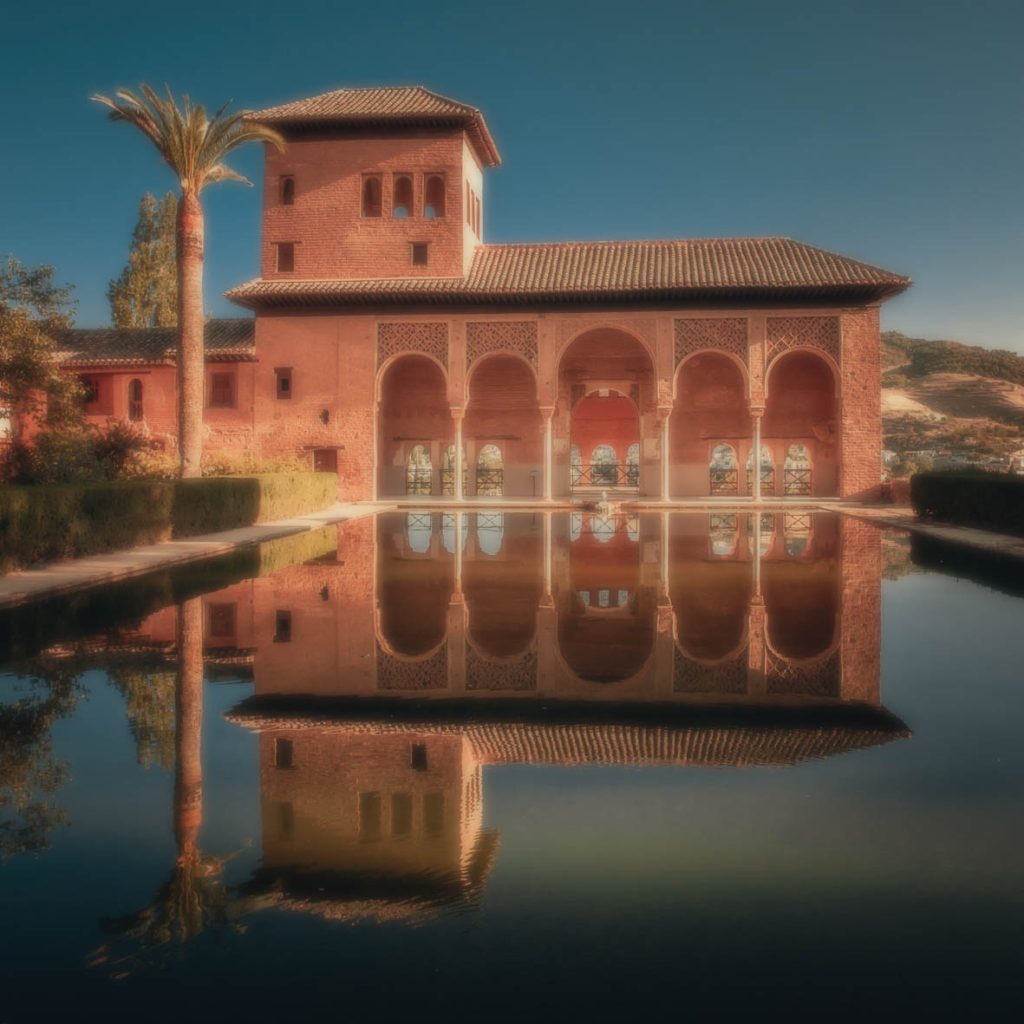
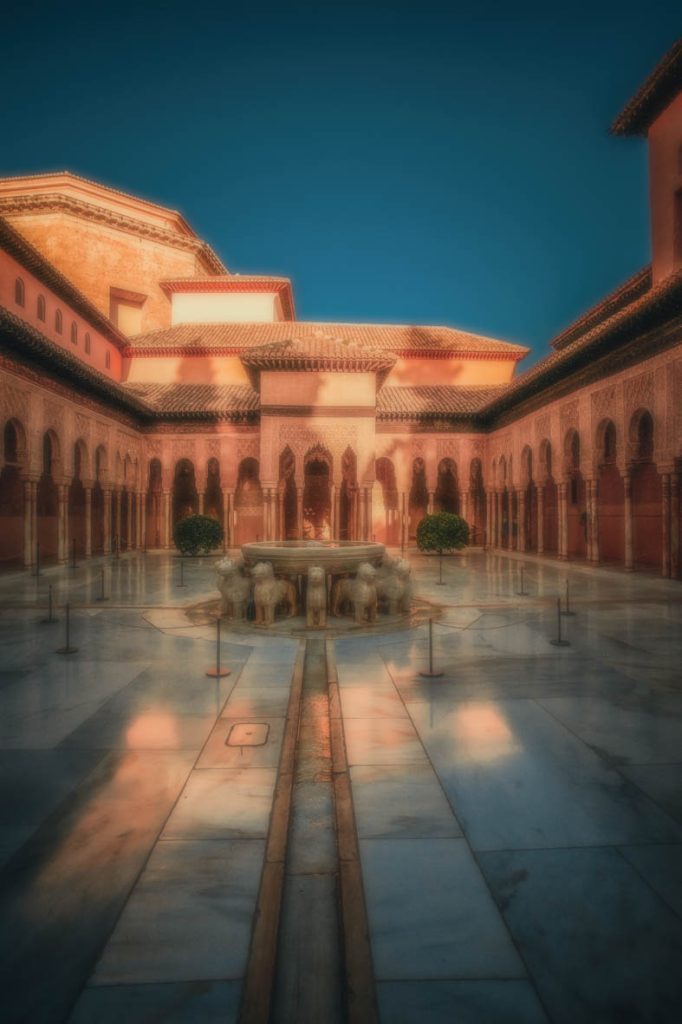
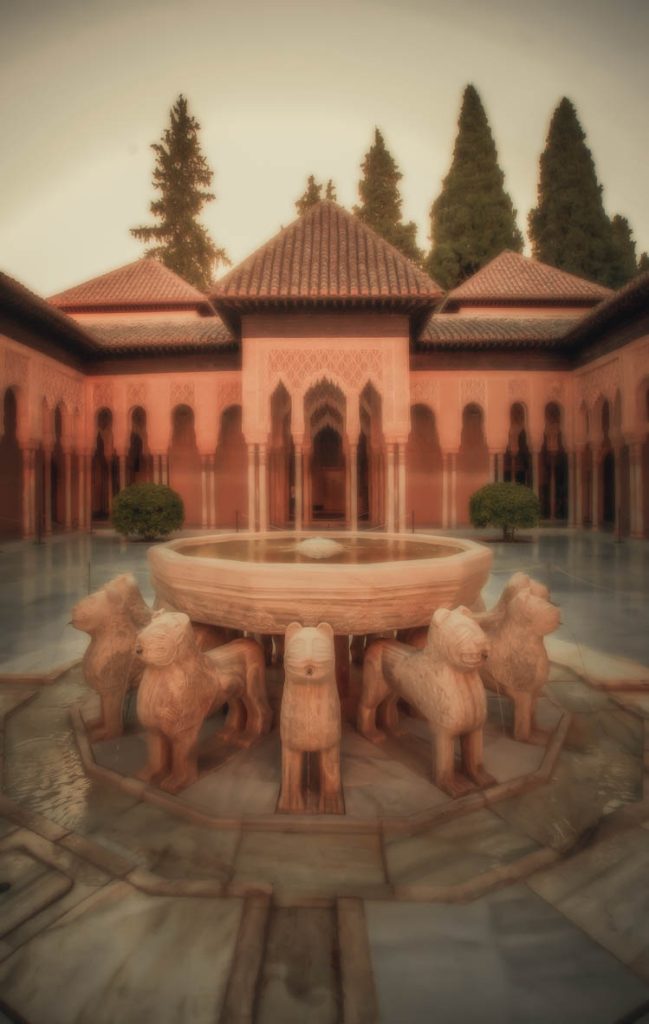
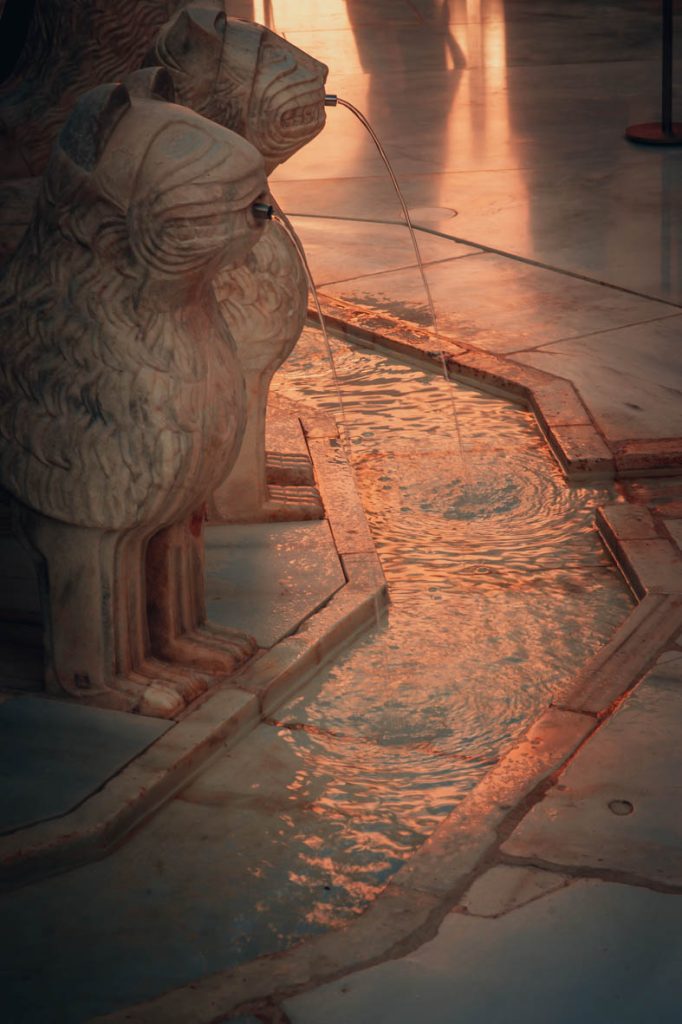
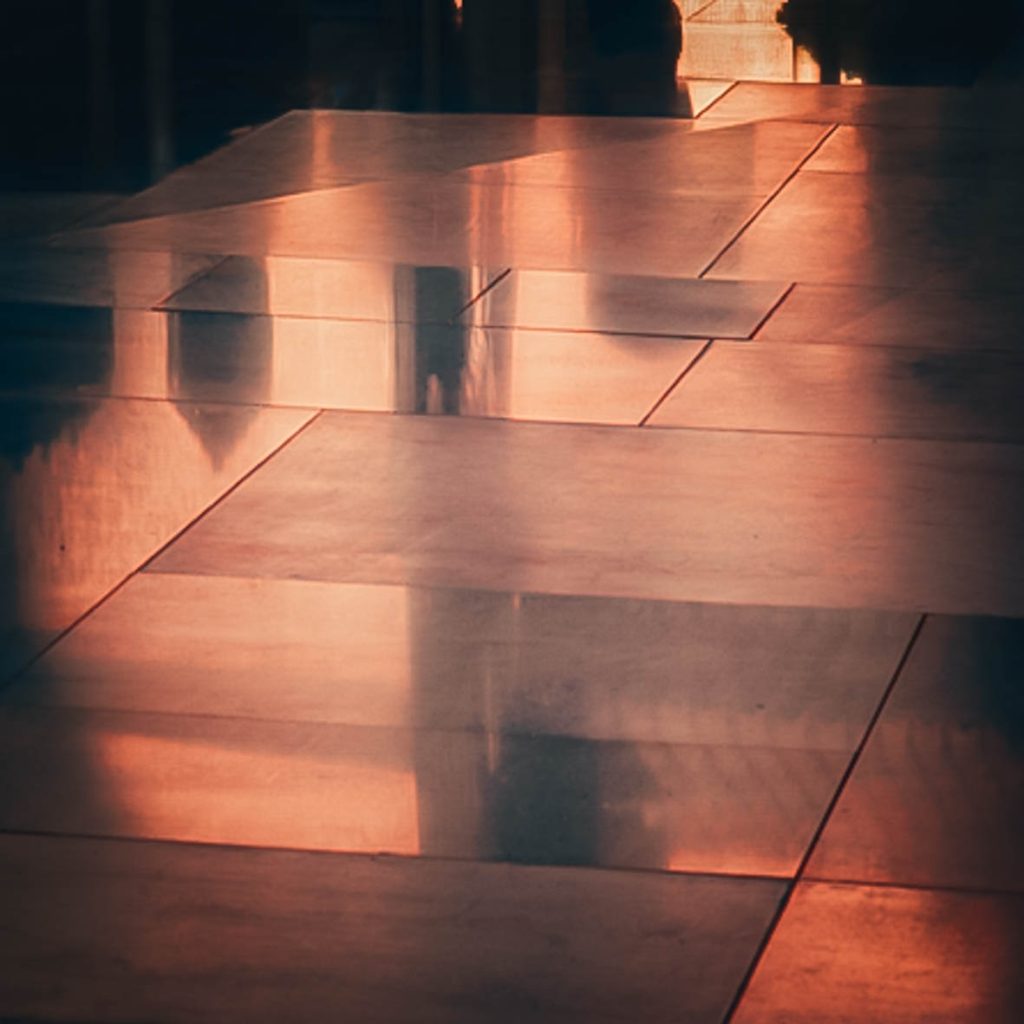
Most of my visits to the Alhambra were made on normal visitor tickets and a couple of things to consider is that you have to joggle with tourists in one of the most visited locations in the world plus the wonderful light is constantly changing and is very contrasty. Some of my images suffer from early sensors with limited dynamic range, also you are not allowed to use tripods.
I have now lived in Andalusia for over 20 years and have known many people who are lucky to work in La Alhambra.
David
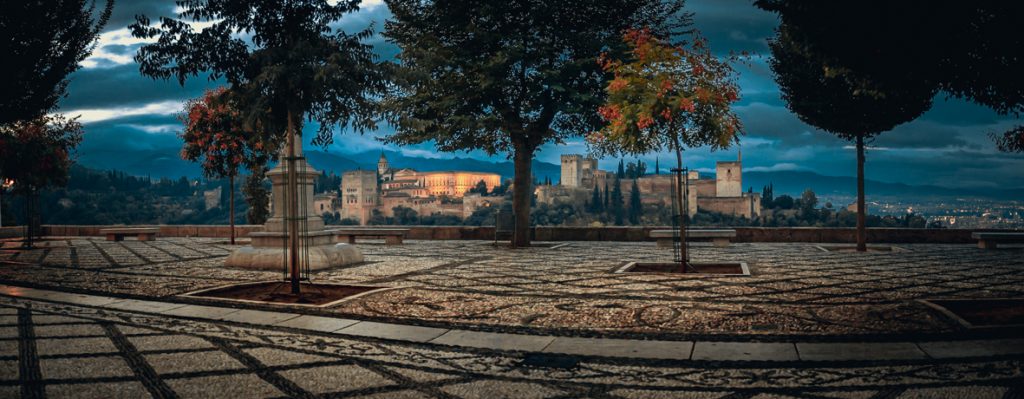
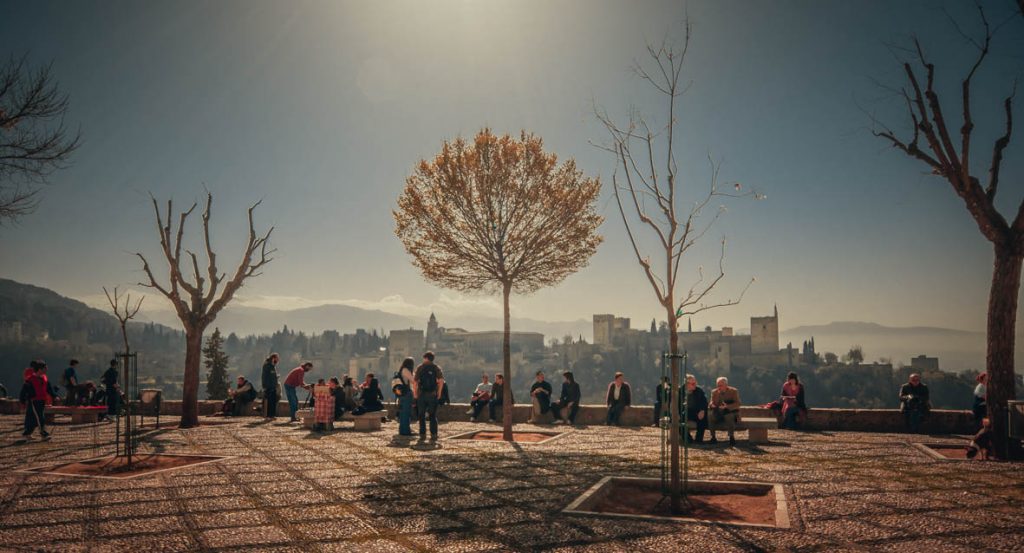
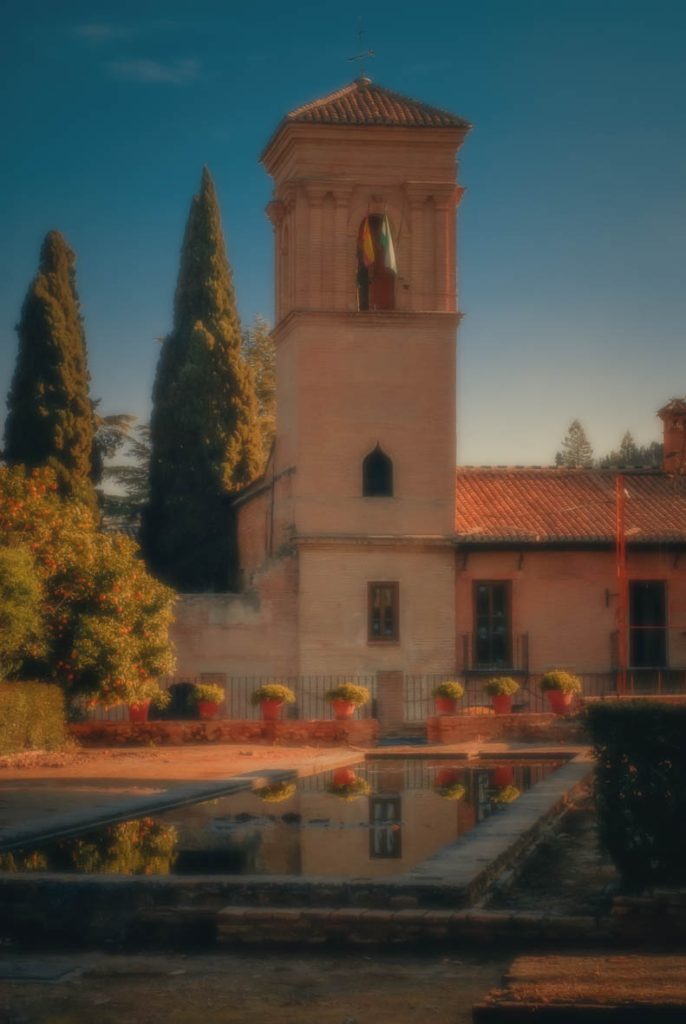
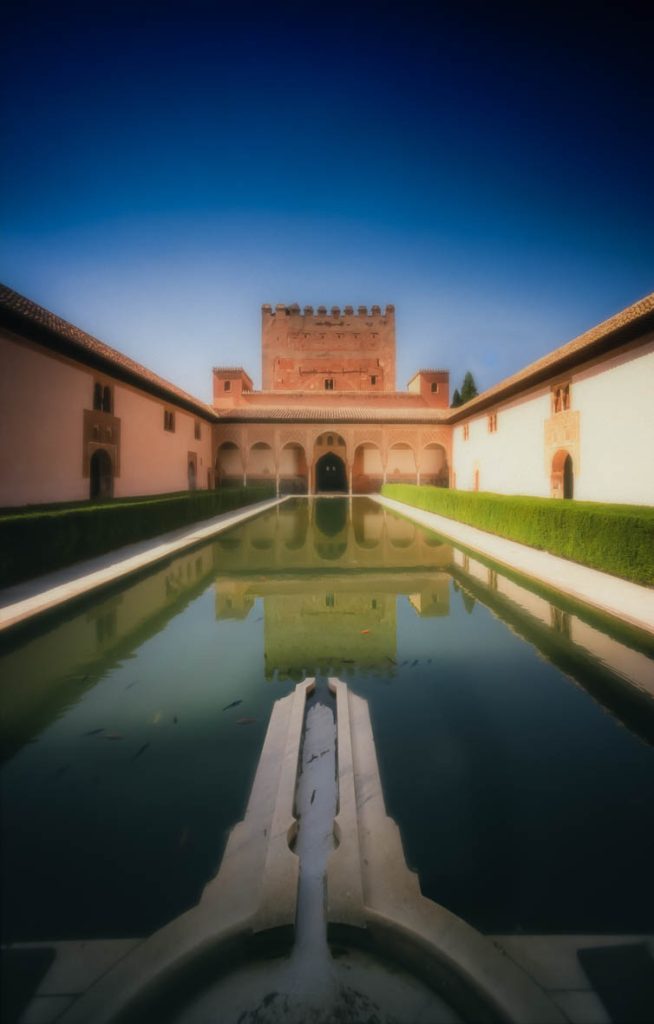
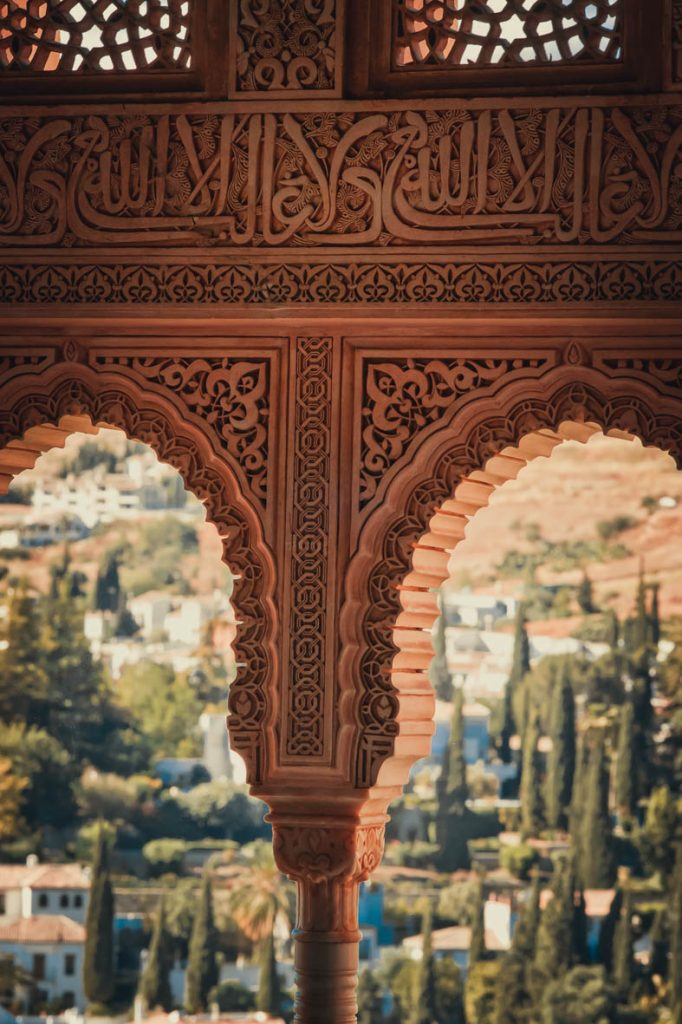
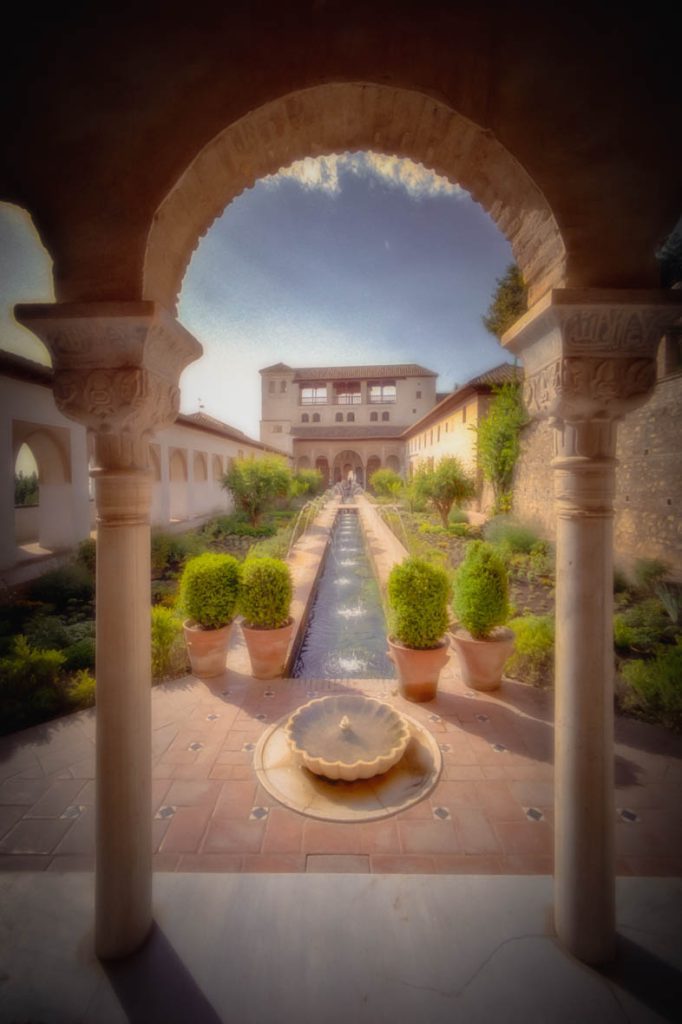
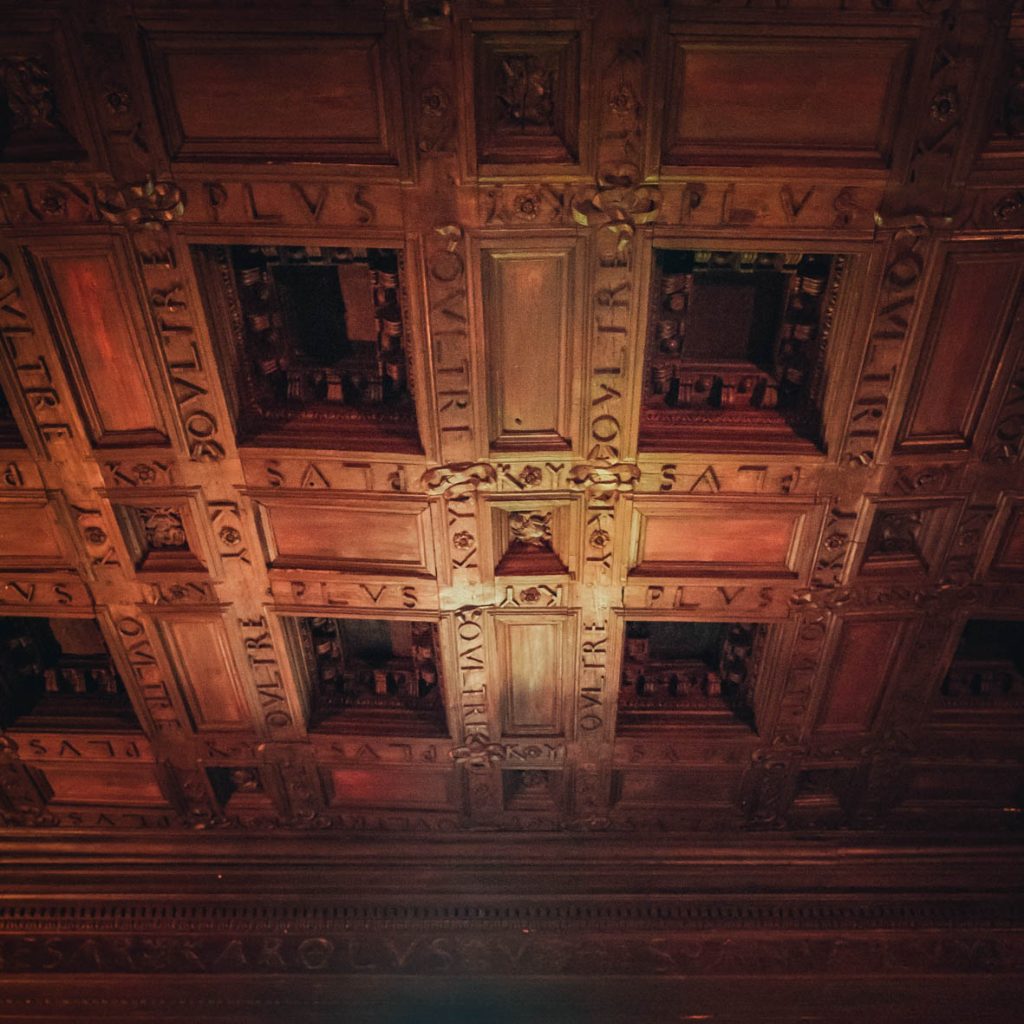
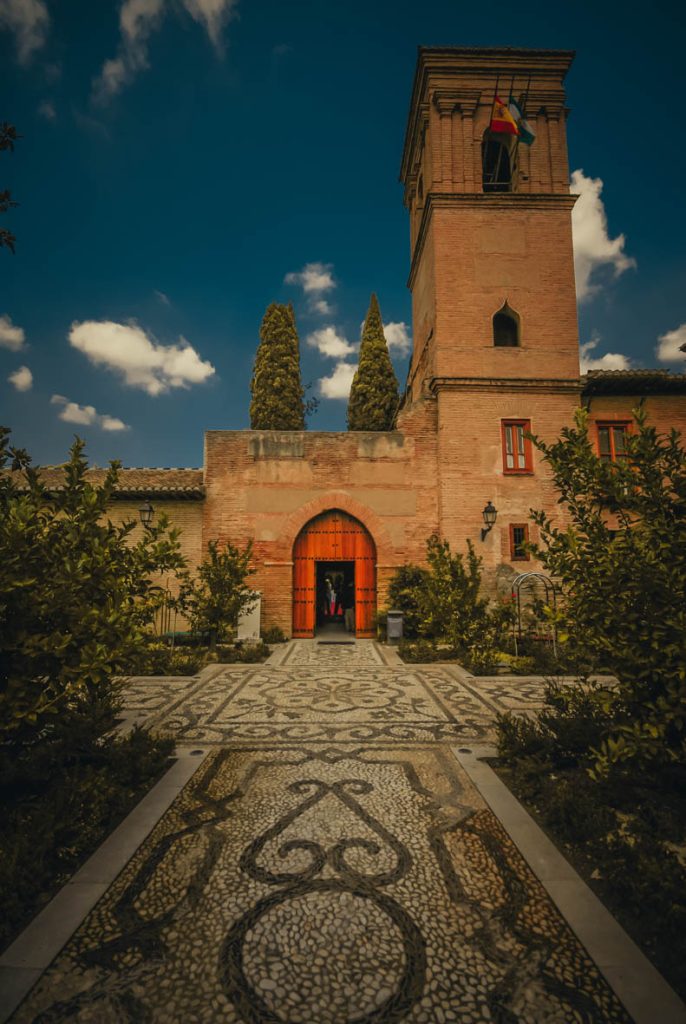
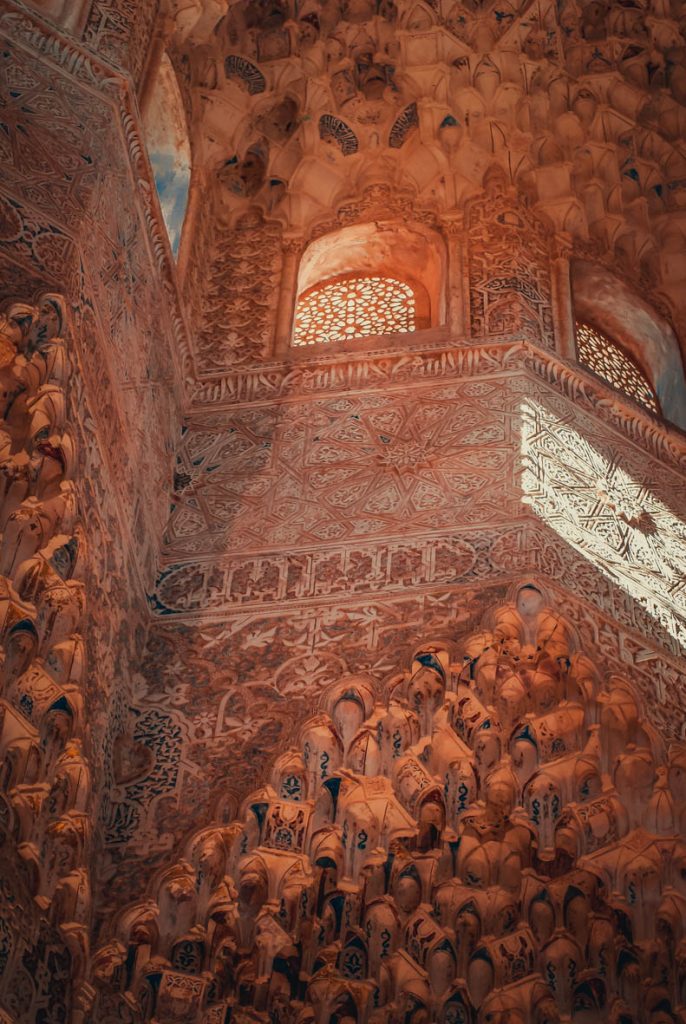
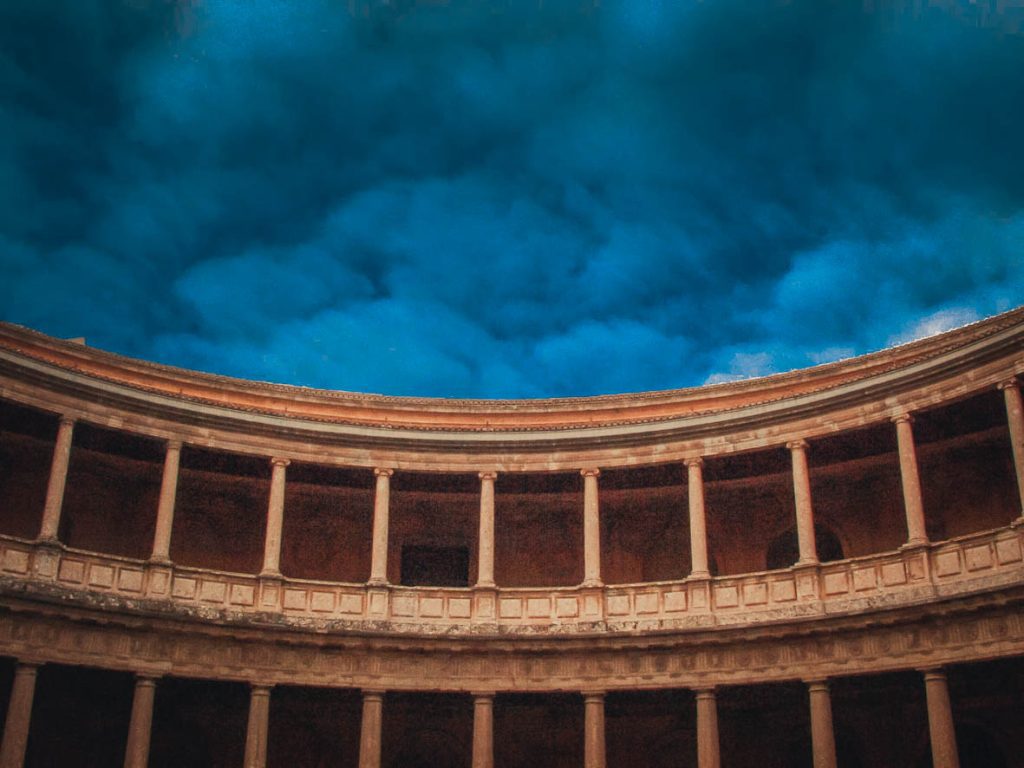
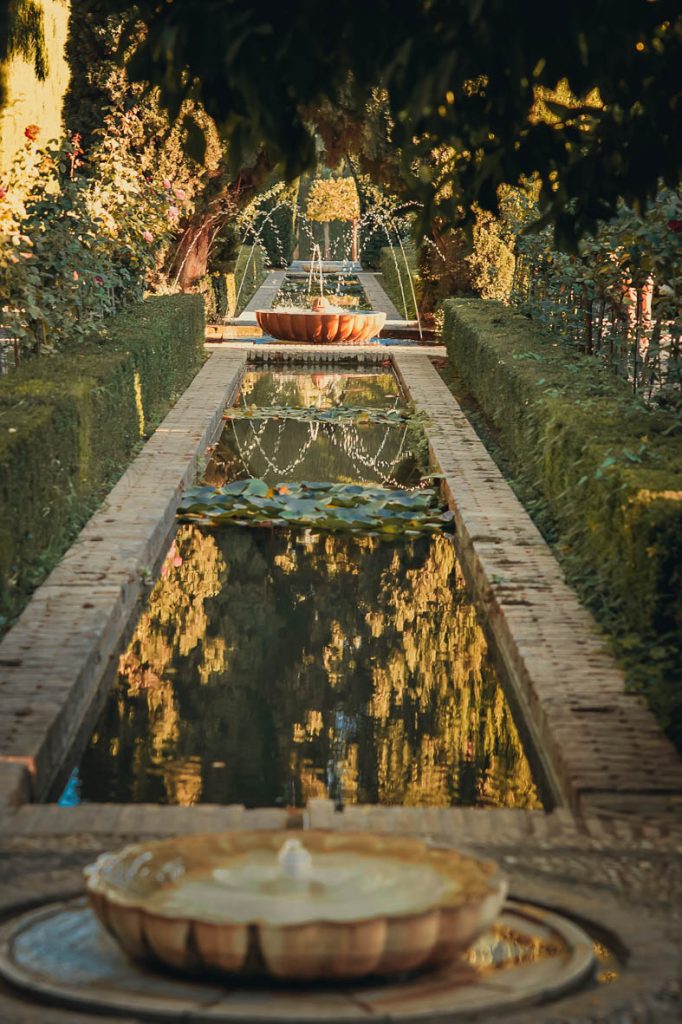
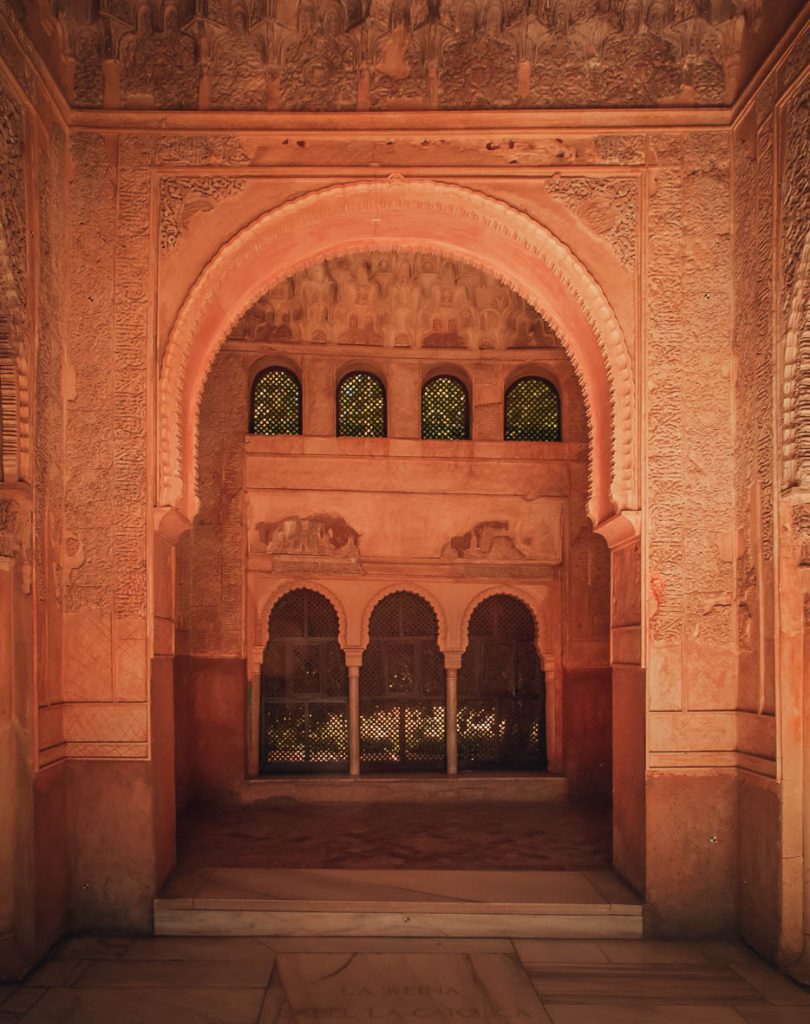
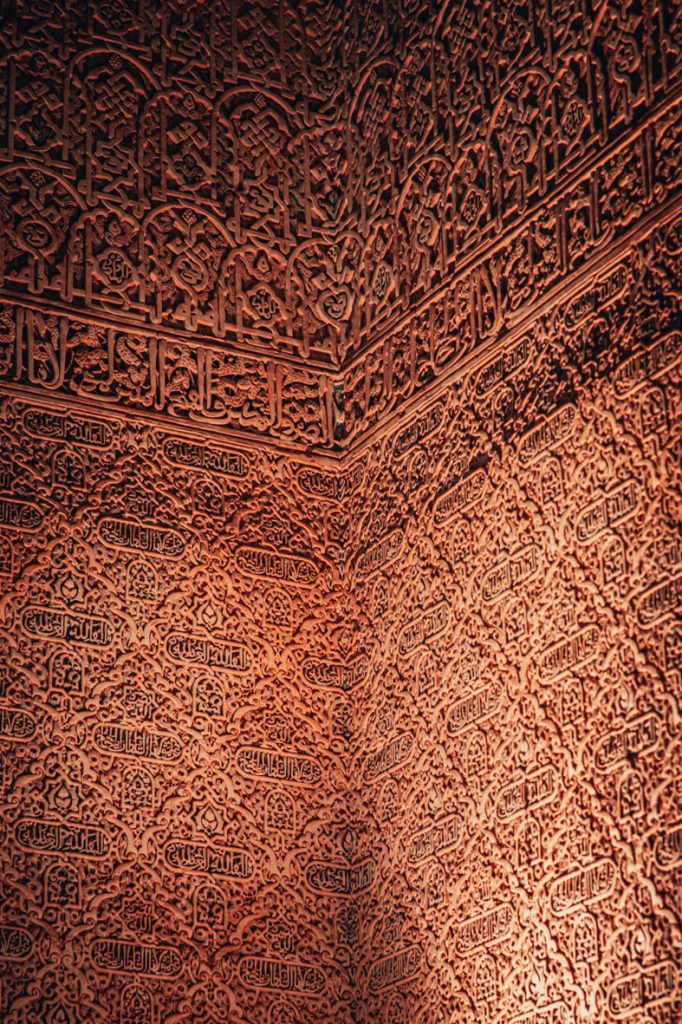
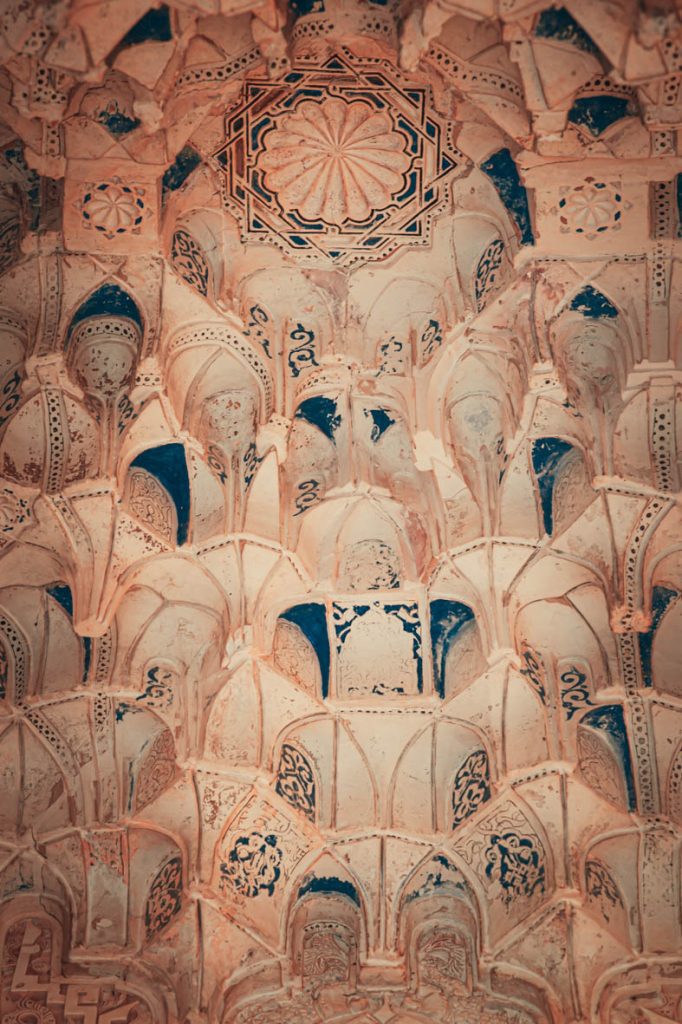
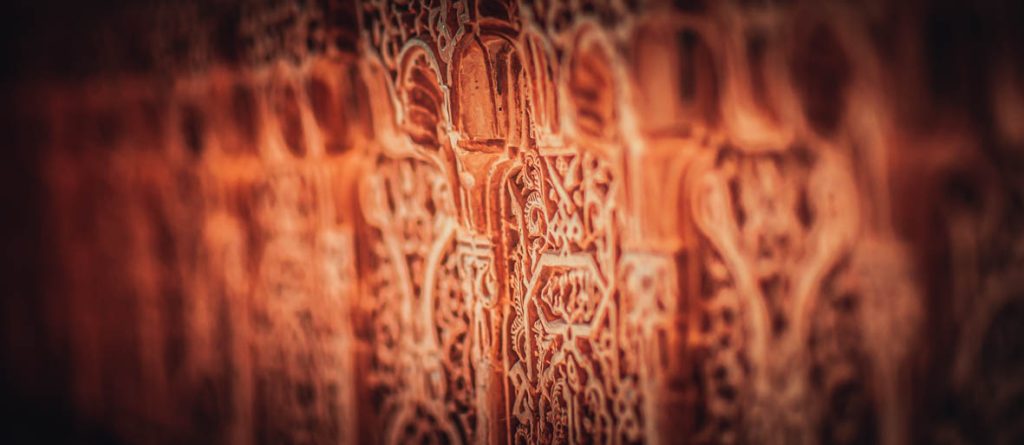
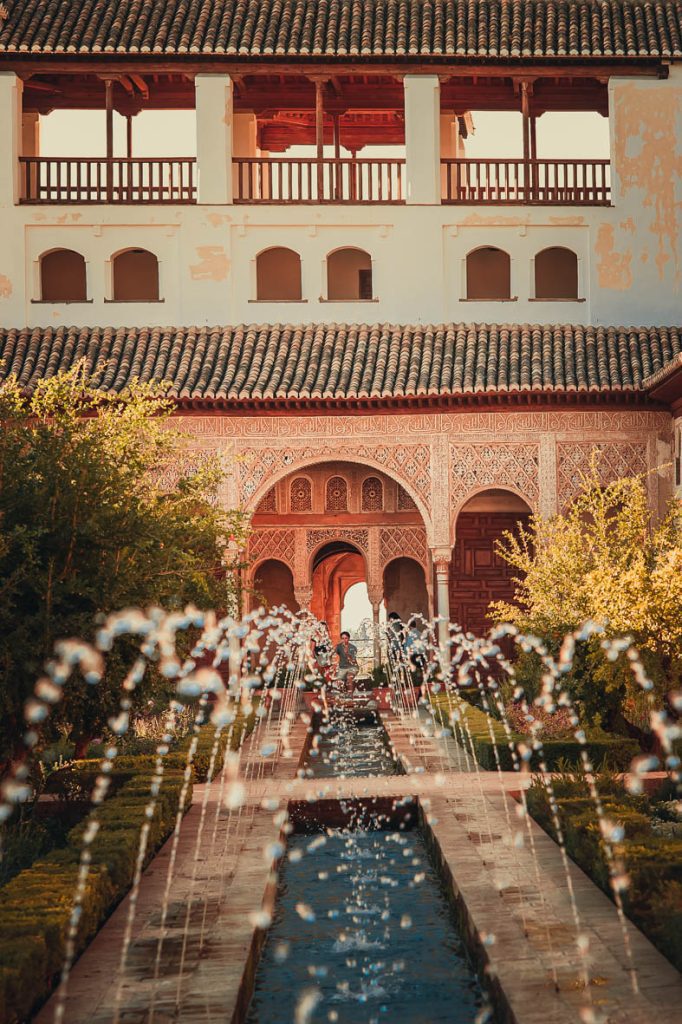
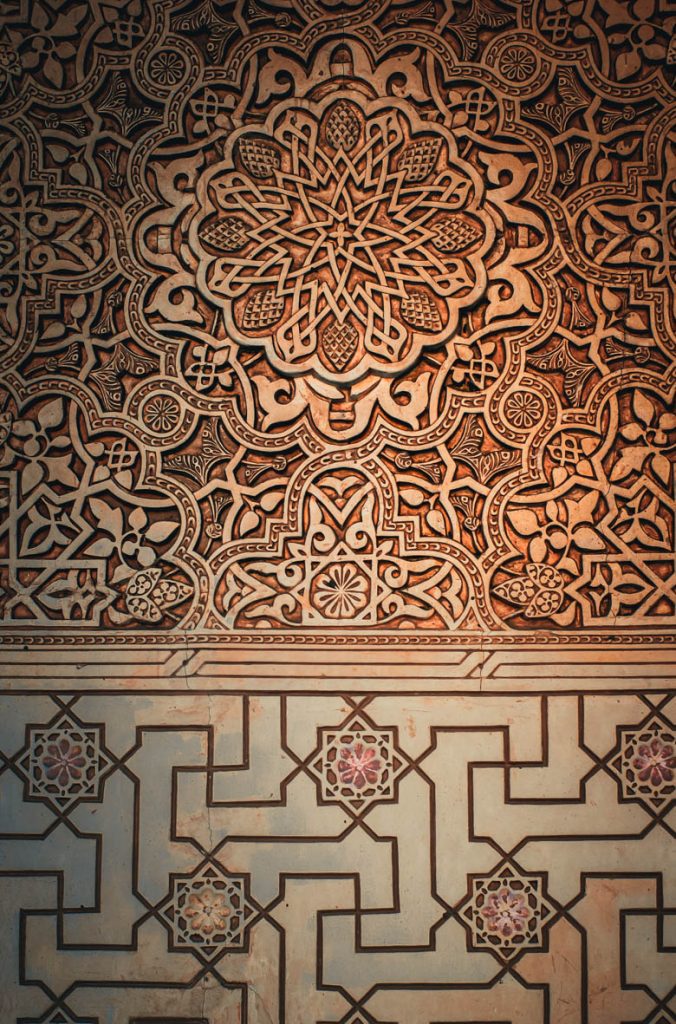
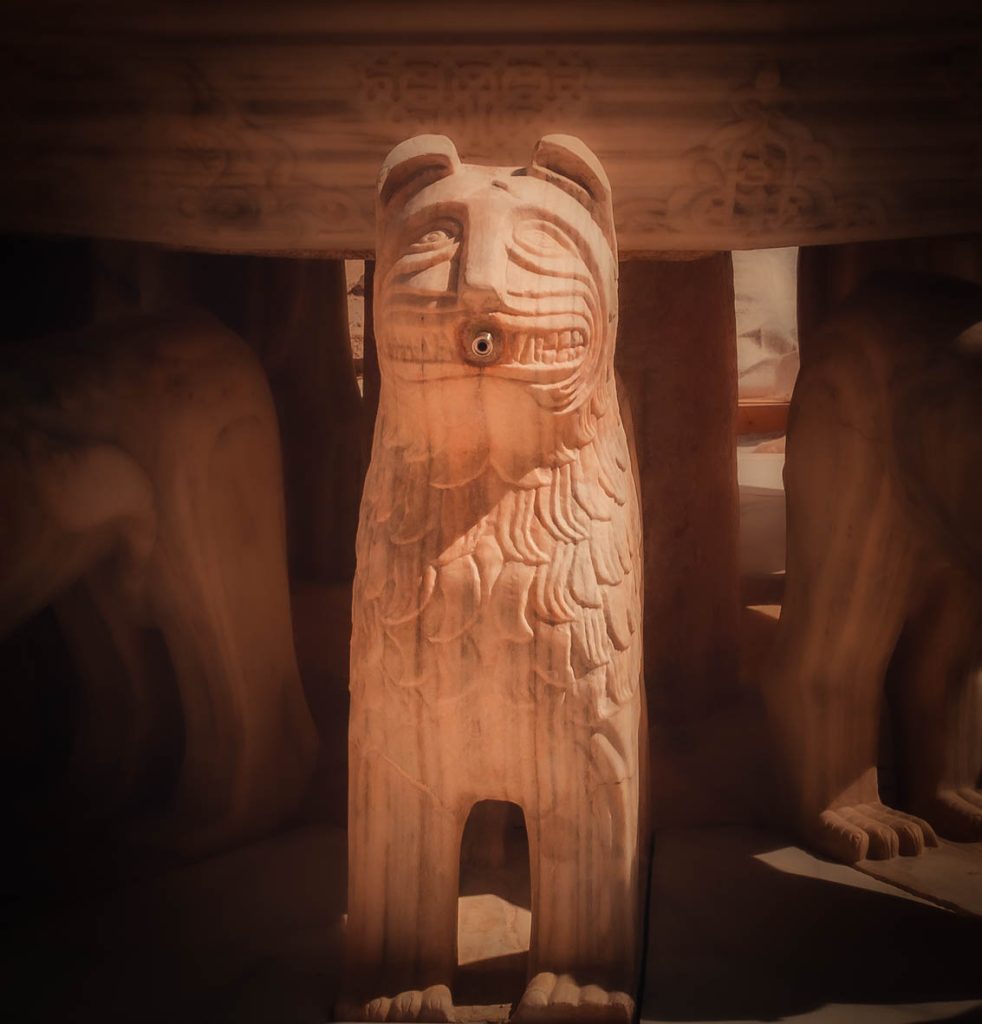
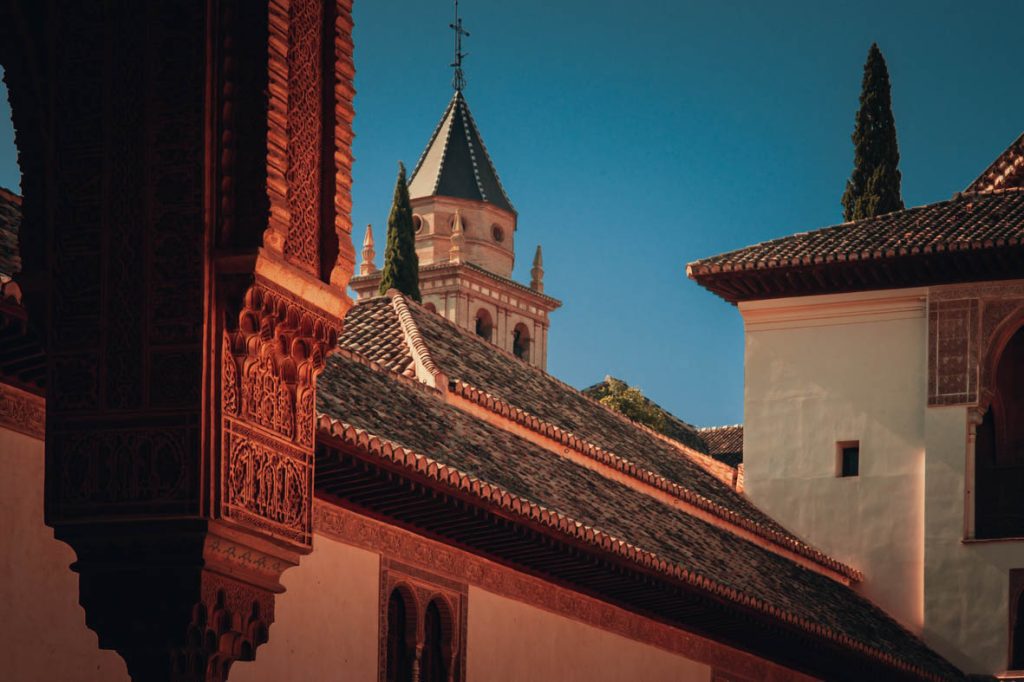
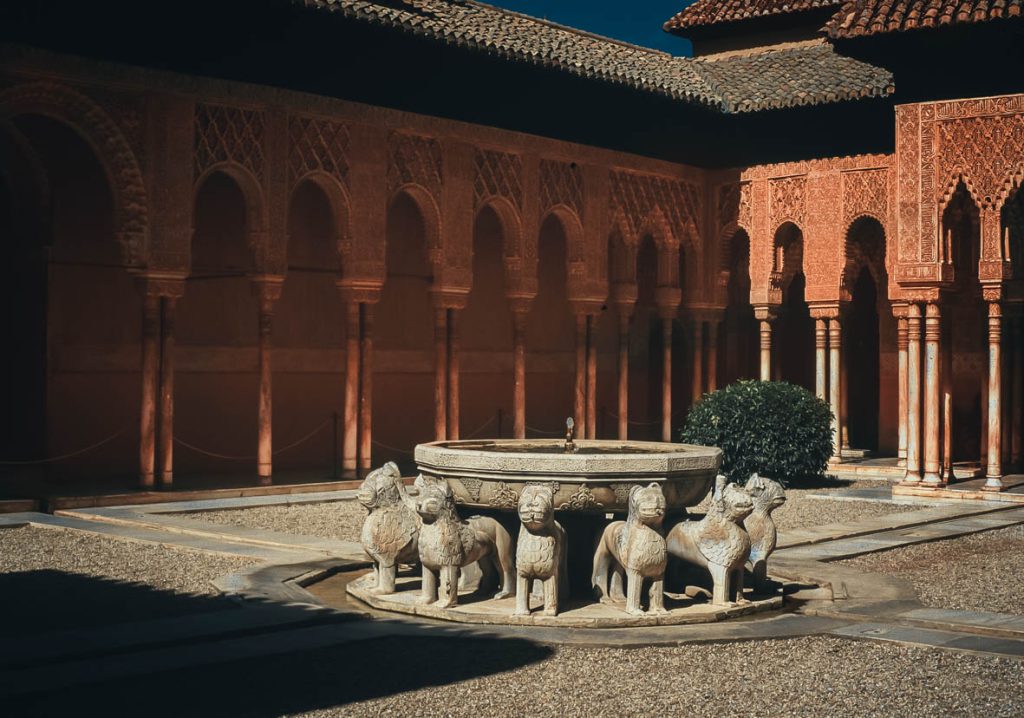
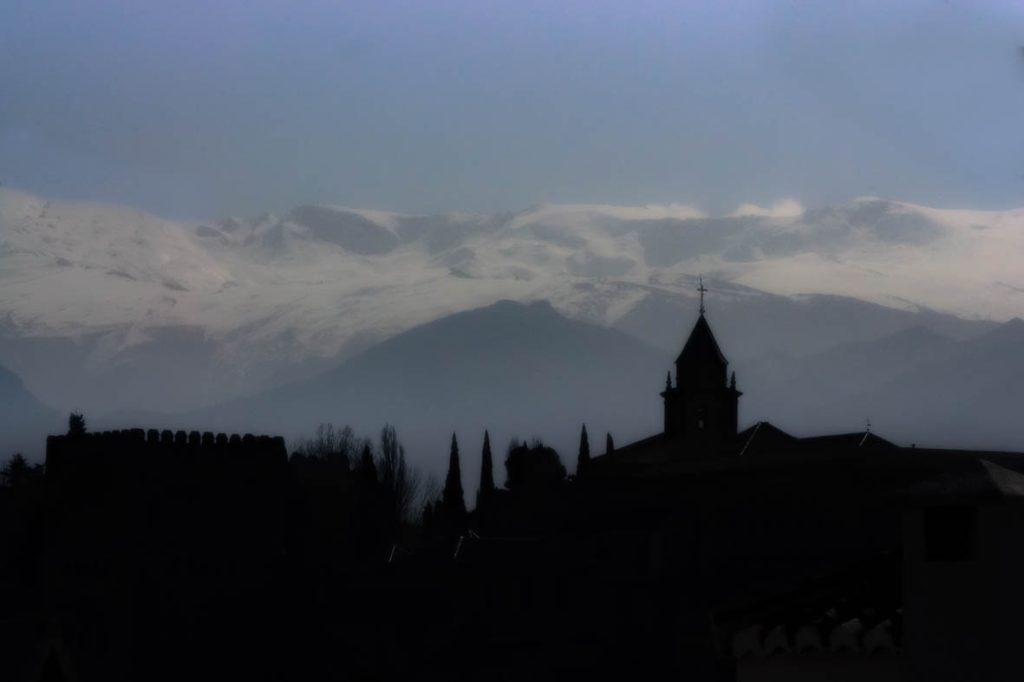
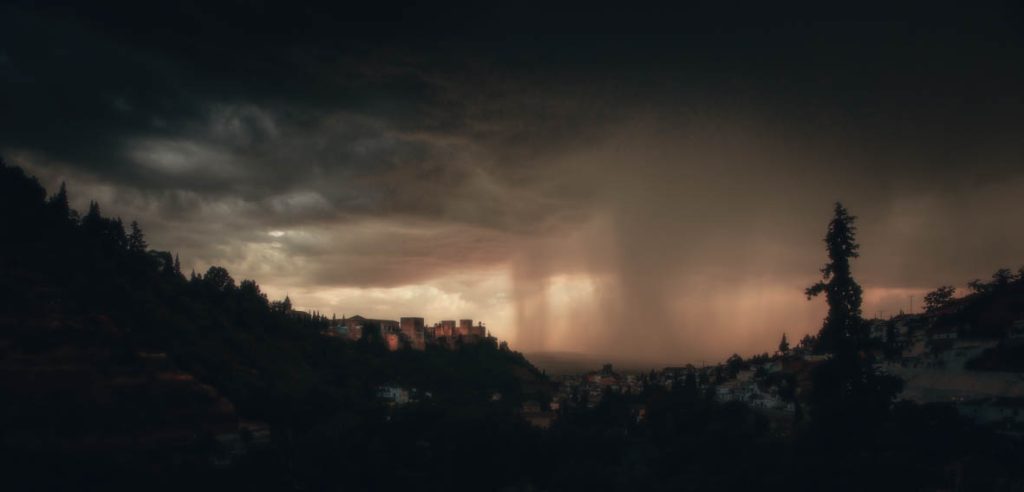
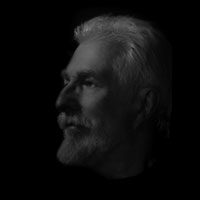
“I was born in the UK and worked as a graphic designer and photographer for most of my life and I feel privileged to have been doing what I love throughout my life and been paid for the pleasure.
I started to take photographs with a Box Brownie at the age of 7 or 8 years old, but the big revelation came when I was 10 and I watched my cousin develop a black and white print using a home made enlarger, ‘that was it, I was hooked’.
The next momentous photographic event came on top of a mountain in Switzerland at the age of 13 when I suddenly thought how do I capture the whole scene. ‘I suddenly knew!’ if I took a series of photographs with my Kodak 127 then join the prints later that should work. It did! 50 years later I am still making panoramic photographs but now digitally though I do occasionally miss the Xpan panoramic camera which stands out among the mass of 5 x 4, roll film, 35mm cameras I have used over the years.
I have shot fashion, cars, musicians, products, hung out of helicopters, photographed air to air and covered the Silver jubilee of the British Queen, but I now work solely on my personal projects.”





Stefan Panaitescu
May 24, 2023 @ 3:25 pm
Hi David!
Fantastic read and photos.
I am so envious because I only got the chance to visit Alhambra in 2018(day trip and night trip).
I didn’t know much about photography back then so I just snapped some pics and since tripods were not allowed my night pics were pretty awful (had a cheap camera also)
I just love the details in your photos and this is what I want to focus on the next time I am there.
I do plan to take my fiancé to another tour of Andalusia and for sure I will stop for two days in Granada.
Your pictures made me look again on some snaps I took there and smile. I had an amazing time in Andalusia in 2018 and in 2023 and this part of the globe is one I would love to spend more time in.
Your cover photo is one of my favs from Granada and hopefully I will be lucky enough to catch some snow on the peaks next time I am there.
Once again, great read!
David A
May 25, 2023 @ 7:50 am
Hi Stefan
Thank you for your comments. If you do visit again try to find the 6/700 yearold grafiti carved on a wall and the tree which Julias Ceasar wrote about ! It is a magical place.
Kind regards David
stefan
May 25, 2023 @ 8:24 am
Thank you so much David!
When all is set and I will be able to return I will bother you with a few questions:) (if that’s ok with you)
loved looking today at the pictures again
Have a great day!
Stefan